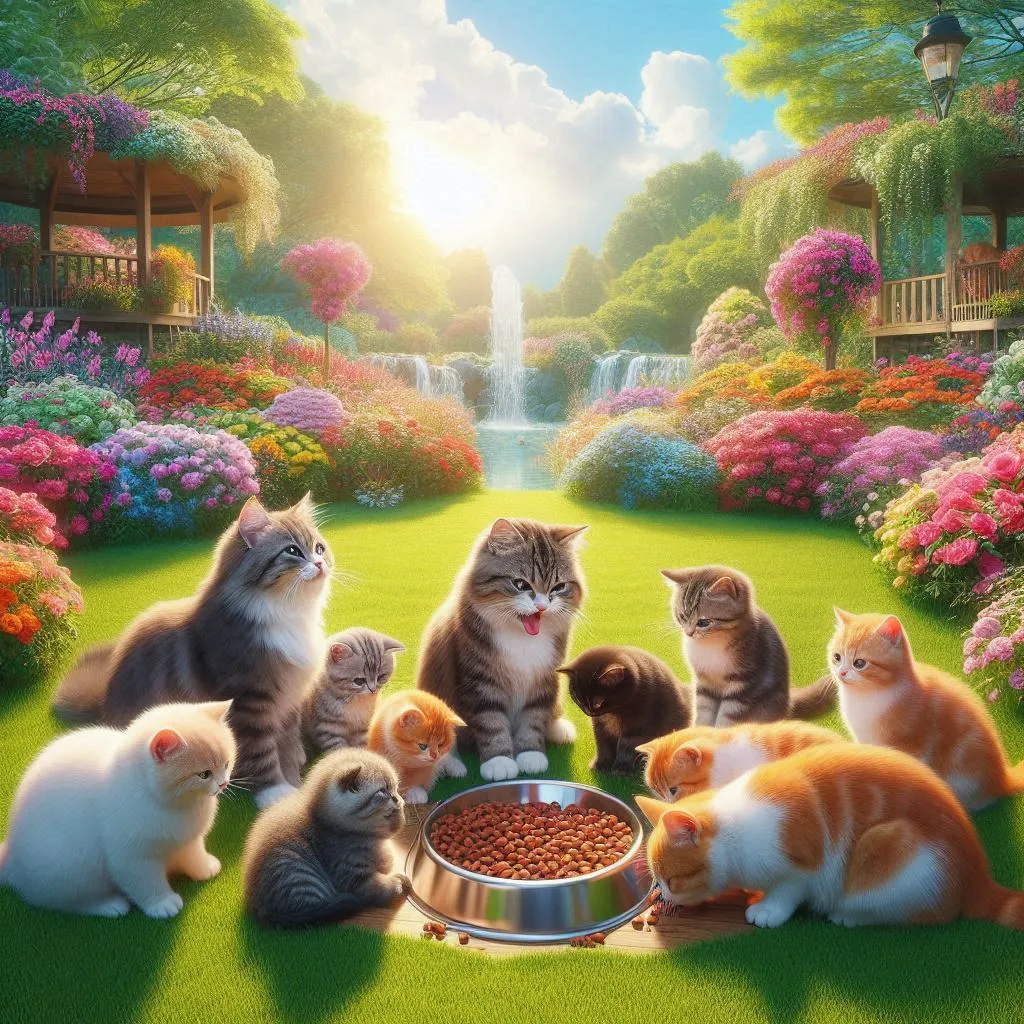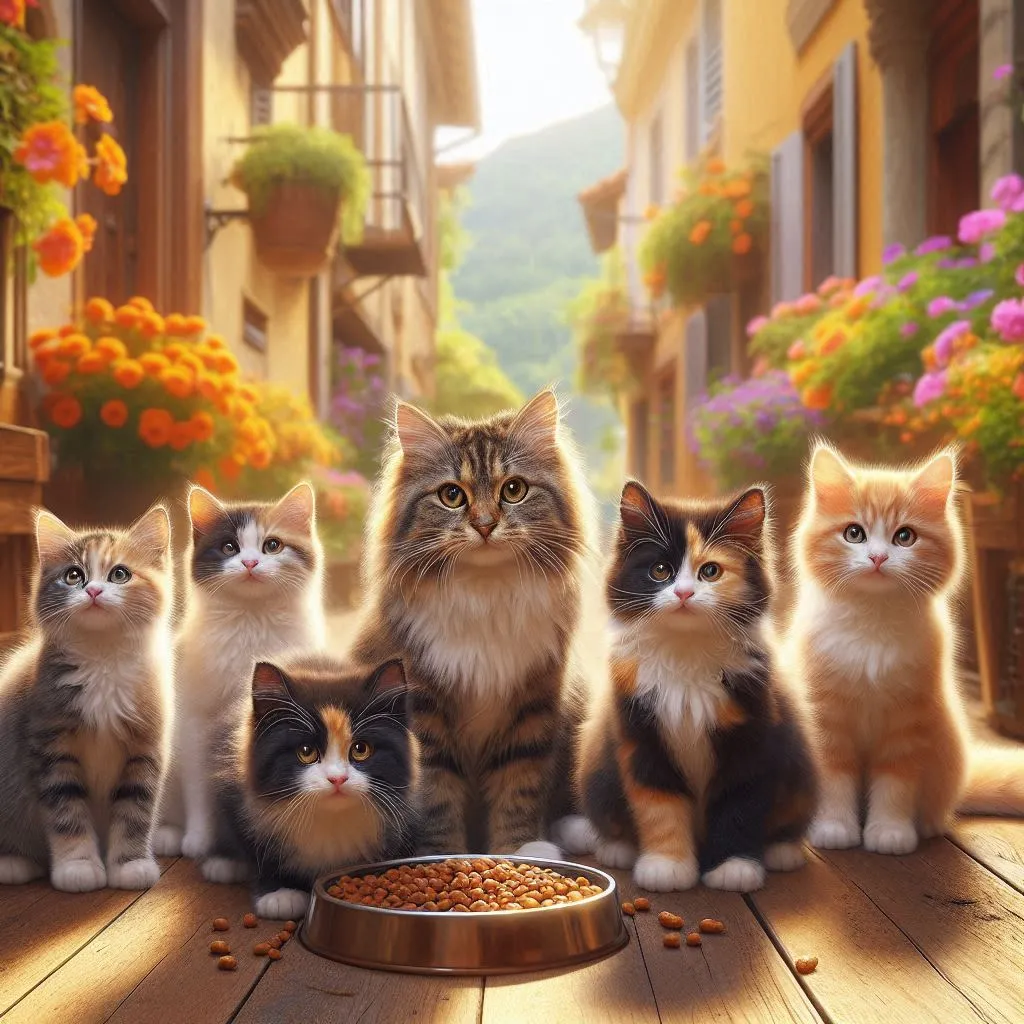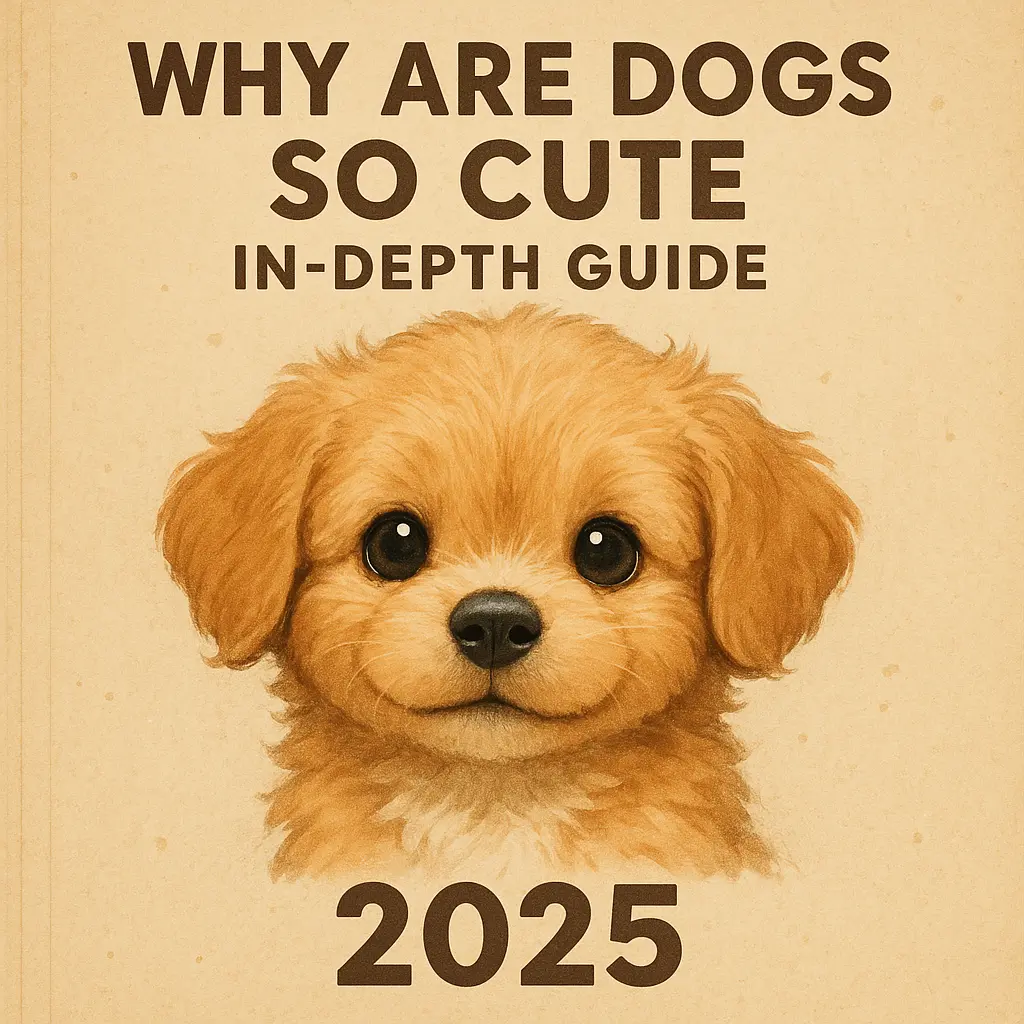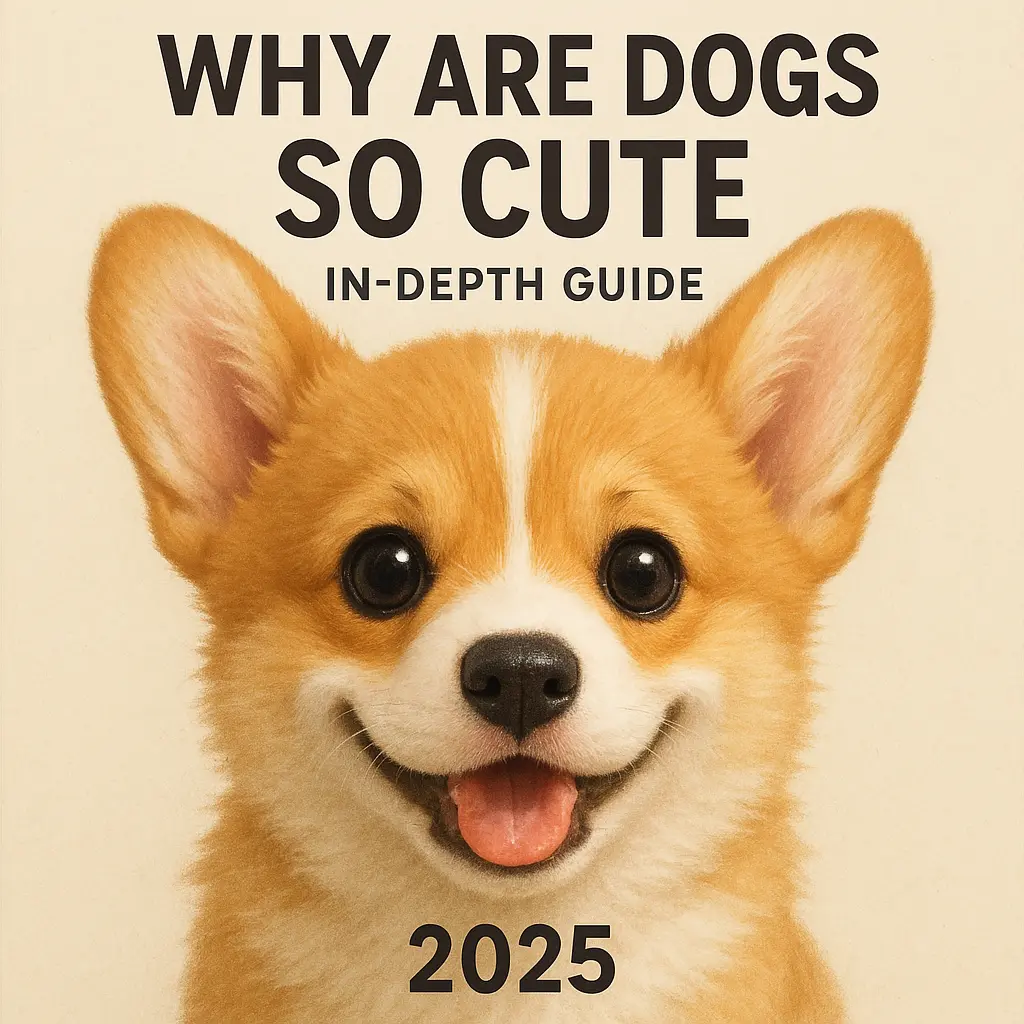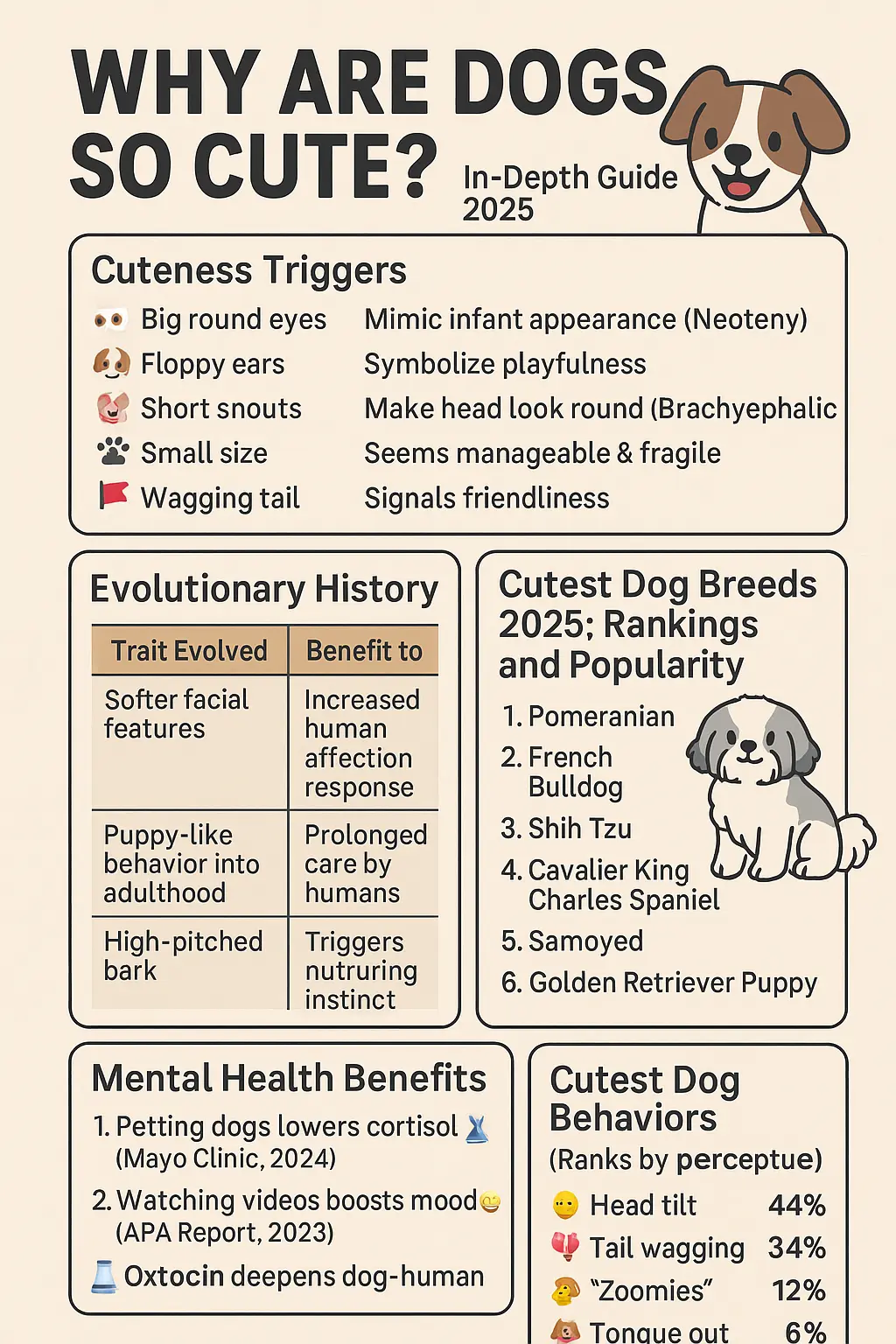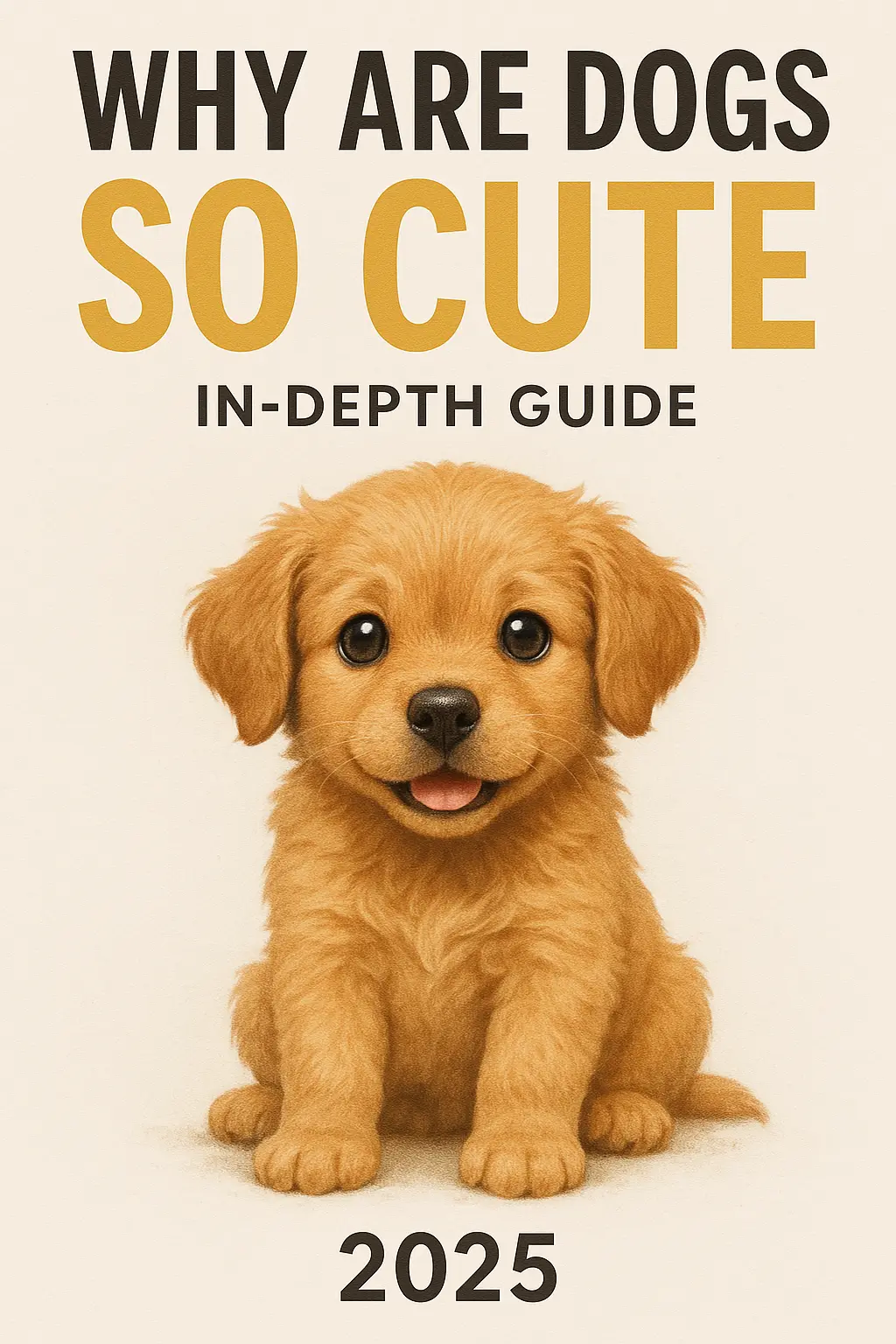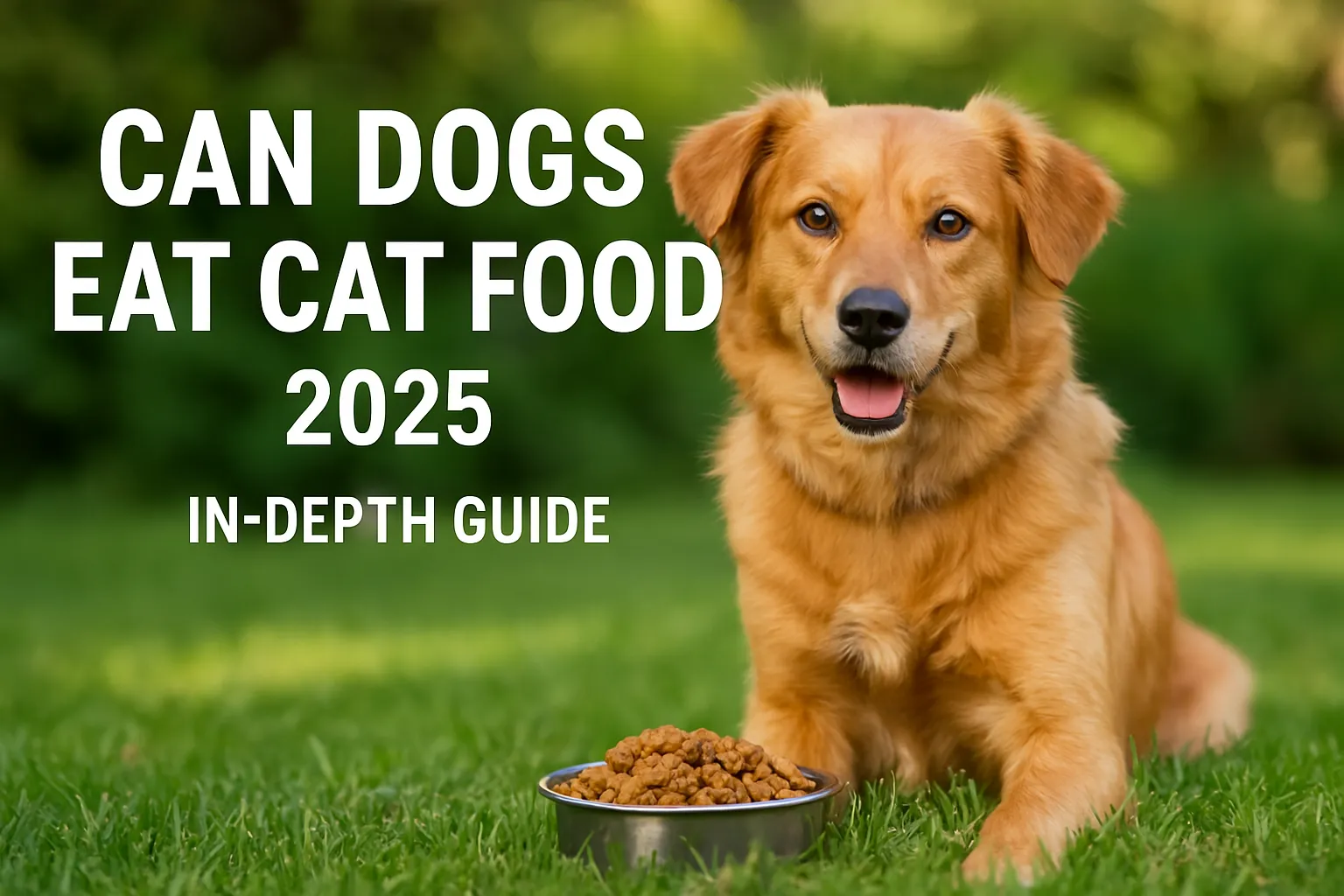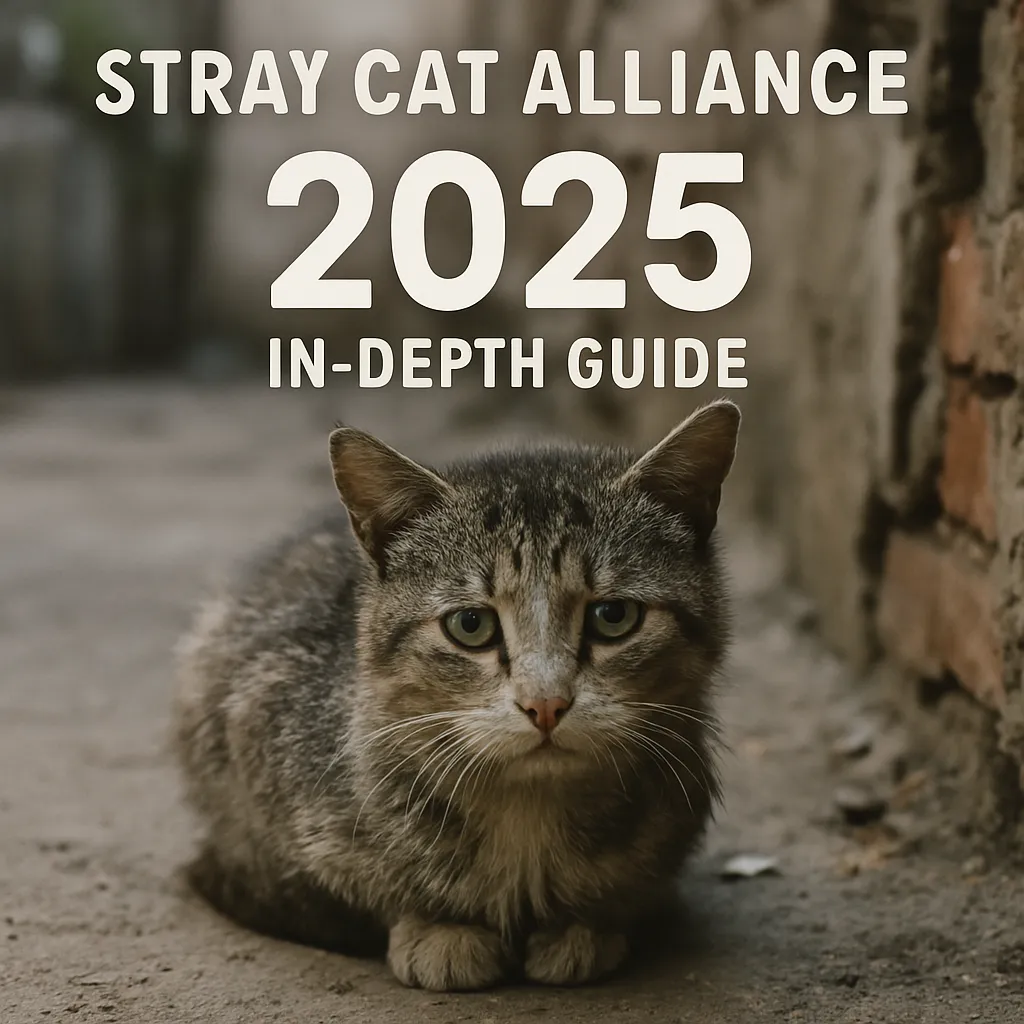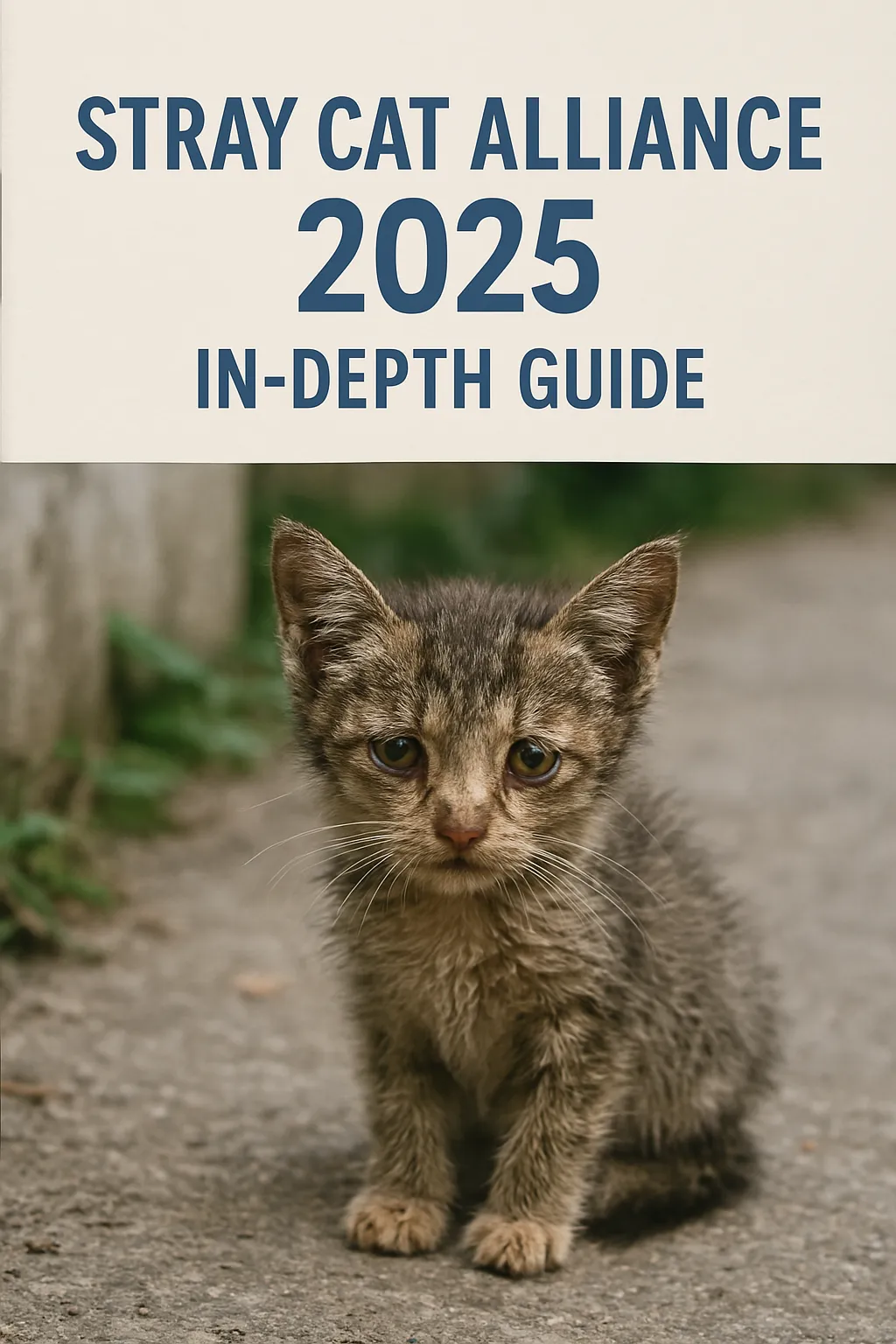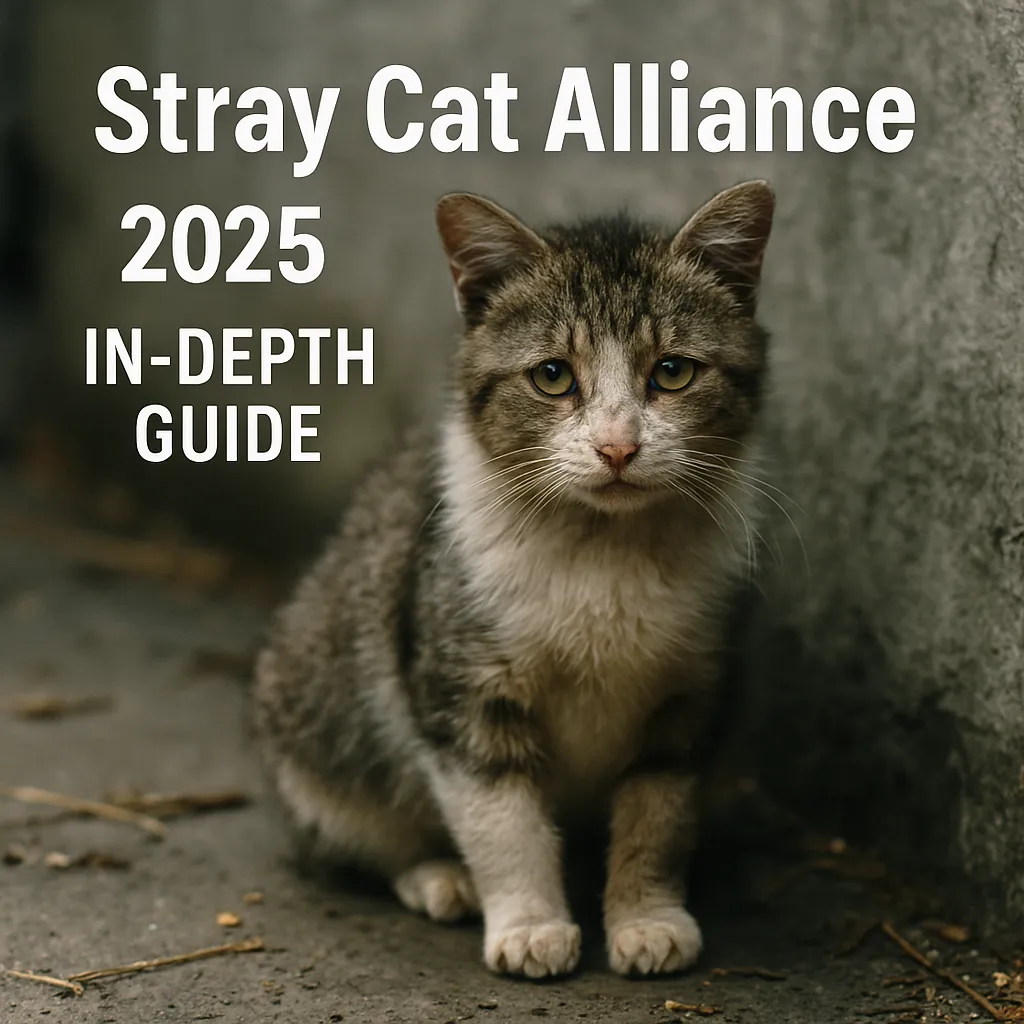
Table of Contents
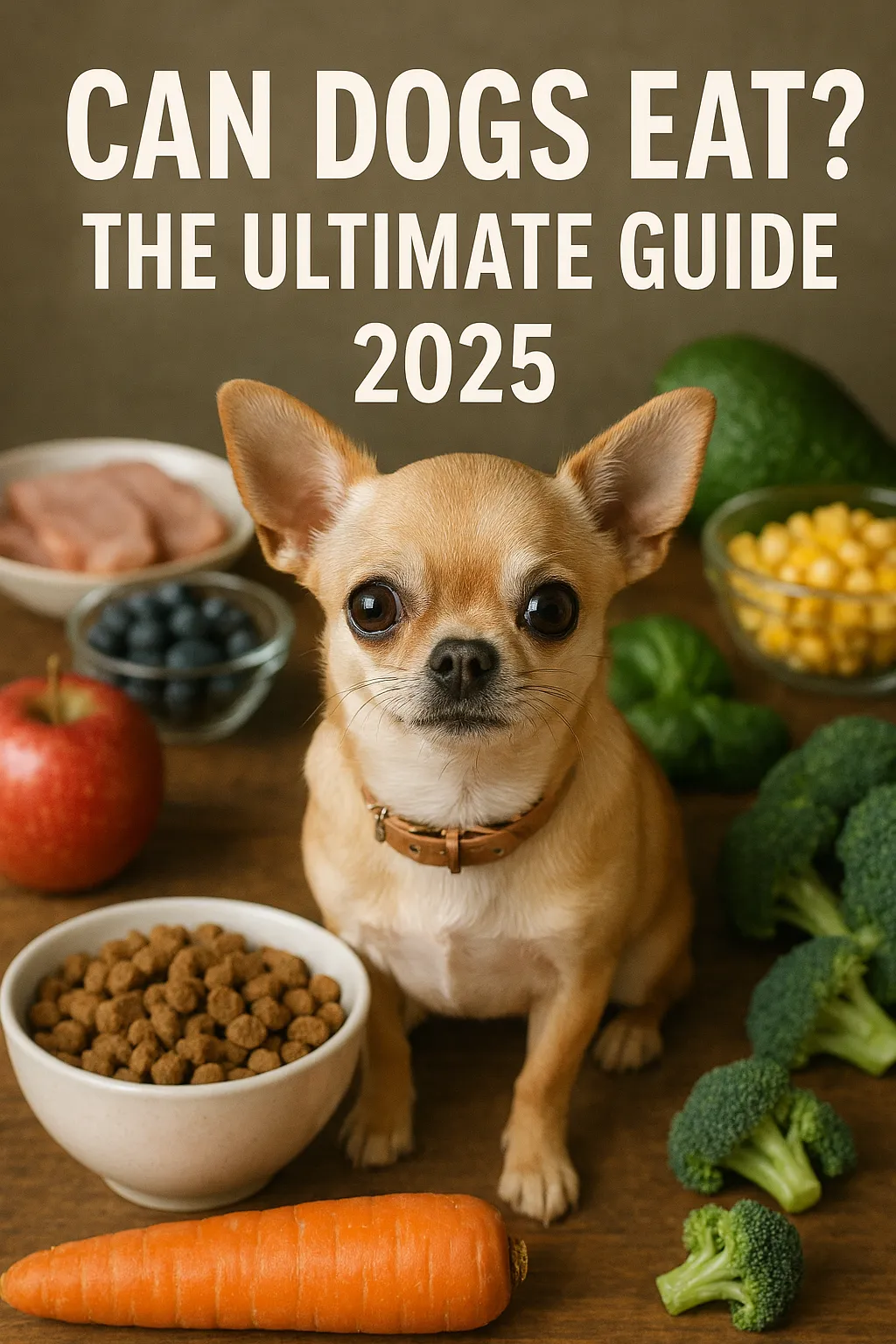
🐶 Can Dogs Eat? – The Ultimate 12,000-Word Guide to Safe & Unsafe Foods for Dogs
Part 1: Introduction
Dogs are curious eaters. Whether it’s a slice of 🍎 apple, a spoon of 🥜 peanut butter, or a bite of 🍫 chocolate (⚠️ dangerous!), our pets often look up at us with those pleading eyes.
But can dogs eat human foods safely?
This guide is your comprehensive, data-backed reference on what dogs can and cannot eat. We’ll cover:
- ✅ Safe foods for dogs (nutritious and healthy).
- ⚠️ Foods that should be given in moderation.
- ❌ Toxic or harmful foods.
- 📊 Tables & forms summarizing key data.
- 🩺 Vet-backed references and authoritative links.
Part 2: ✅ Safe Foods Dogs Can Eat
Dogs are natural omnivores, which means they can benefit from a variety of foods beyond traditional kibble. The following list includes vet-approved, safe human foods that can serve as healthy additions or treats in your dog’s diet.
1. Apples 🍎
Apples are one of the best fruits you can share with your dog. They are low in calories and packed with fiber and vitamins.
| Aspect | Details |
|---|---|
| Can Dogs Eat It? | ✅ Yes |
| Benefits | Rich in Vitamin A & C, supports immunity & skin |
| Risks | Seeds contain cyanide (toxic), avoid core |
| Serving Tip | Slice into thin pieces, remove seeds/core |
📝 Food Safety Form – Apple
- Food: 🍎 Apple
- Safe? ✅ Yes
- Benefits: Antioxidants, vitamins, crunchy texture helps clean teeth
- Serving Size: 1–2 slices for small dogs, up to half for large dogs
- Warning: Never give seeds or stems
2. Carrots 🥕
Carrots are a crunchy, low-calorie treat loved by dogs.
| Aspect | Details |
|---|---|
| Can Dogs Eat It? | ✅ Yes |
| Benefits | Beta-carotene → Vitamin A (good for vision, immunity) |
| Risks | Too many may cause orange-tinted stool |
| Serving Tip | Raw sticks, steamed, or frozen for teething puppies |
📝 Food Safety Form – Carrot
- Food: 🥕 Carrot
- Safe? ✅ Yes
- Benefits: Eye health, natural dental chew
- Serving Size: Baby carrot or stick as daily treat
- Warning: Overfeeding = fiber overload
3. Blueberries 🍓
Blueberries are antioxidant superfoods for dogs.
| Aspect | Details |
|---|---|
| Can Dogs Eat It? | ✅ Yes |
| Benefits | Rich in antioxidants, vitamin K, manganese |
| Risks | Too many → diarrhea |
| Serving Tip | Use as training treats |
📝 Food Safety Form – Blueberries
- Food: 🍓 Blueberry
- Safe? ✅ Yes
- Benefits: Protects cells, low-calorie, bite-sized
- Serving Size: 2–3 berries (small dogs), 6–8 (large dogs)
- Warning: Introduce slowly
4. Chicken 🍗
A classic safe protein for dogs.
| Aspect | Details |
|---|---|
| Can Dogs Eat It? | ✅ Yes (cooked) |
| Benefits | Lean protein, muscle repair |
| Risks | Bones splinter; seasoning harmful |
| Serving Tip | Plain, boiled or grilled |
📝 Food Safety Form – Chicken
- Food: 🍗 Chicken
- Safe? ✅ Yes (cooked, unseasoned)
- Benefits: Essential amino acids, energy source
- Serving Size: 1–2 bites (small dogs), up to ¼ cup (large dogs)
- Warning: No bones, no fried/seasoned chicken
5. Salmon 🐟
Salmon is packed with omega-3 fatty acids, great for skin and coat.
| Aspect | Details |
|---|---|
| Can Dogs Eat It? | ✅ Yes (cooked) |
| Benefits | Omega-3 supports skin, joints, heart |
| Risks | Raw salmon may carry parasites |
| Serving Tip | Cook thoroughly, debone |
📝 Food Safety Form – Salmon
- Food: 🐟 Salmon
- Safe? ✅ Yes (cooked)
- Benefits: Anti-inflammatory, shiny coat
- Serving Size: Small chunk once a week
- Warning: Never raw
6. Rice 🍚
A gentle carbohydrate for sensitive stomachs.
| Aspect | Details |
|---|---|
| Can Dogs Eat It? | ✅ Yes |
| Benefits | Easy to digest, balances upset stomach |
| Risks | Too much → weight gain |
| Serving Tip | Plain, boiled |
📝 Food Safety Form – Rice
- Food: 🍚 Rice
- Safe? ✅ Yes
- Benefits: Energy, digestive aid
- Serving Size: 1–2 tbsp with meals
- Warning: Avoid fried or seasoned rice
7. Pumpkin 🎃
Pumpkin is a digestive powerhouse for dogs.
| Aspect | Details |
|---|---|
| Can Dogs Eat It? | ✅ Yes |
| Benefits | High fiber → regulates digestion |
| Risks | Too much = diarrhea |
| Serving Tip | Pureed, canned (unsweetened) |
📝 Food Safety Form – Pumpkin
- Food: 🎃 Pumpkin
- Safe? ✅ Yes
- Benefits: Constipation/diarrhea relief, vitamins A & E
- Serving Size: 1 tsp (small dogs), 1–2 tbsp (large dogs)
- Warning: Avoid pumpkin pie filling
8. Oatmeal 🌾
A great grain for dogs with wheat allergies.
| Aspect | Details |
|---|---|
| Can Dogs Eat It? | ✅ Yes |
| Benefits | Soluble fiber, good for digestion |
| Risks | Sugary instant oatmeal harmful |
| Serving Tip | Cooked plain only |
📝 Food Safety Form – Oatmeal
- Food: 🌾 Oatmeal
- Safe? ✅ Yes
- Benefits: Fiber, helps regulate cholesterol
- Serving Size: 1 tbsp for small, ¼ cup for large dogs
- Warning: No sugar, milk, or flavor packets
9. Sweet Potatoes 🍠
Packed with nutrients and fiber.
| Aspect | Details |
|---|---|
| Can Dogs Eat It? | ✅ Yes |
| Benefits | Vitamins A, B6, fiber |
| Risks | High carb; avoid raw |
| Serving Tip | Baked or boiled, mashed |
📝 Food Safety Form – Sweet Potato
- Food: 🍠 Sweet Potato
- Safe? ✅ Yes (cooked)
- Benefits: Good for gut health, energy boost
- Serving Size: 1 cube or spoonful
- Warning: No raw sweet potatoes
10. Cucumbers 🥒
A hydrating, low-calorie snack.
| Aspect | Details |
|---|---|
| Can Dogs Eat It? | ✅ Yes |
| Benefits | 95% water, cooling in summer |
| Risks | Large pieces → choking |
| Serving Tip | Slice thin rounds |
📝 Food Safety Form – Cucumber
- Food: 🥒 Cucumber
- Safe? ✅ Yes
- Benefits: Hydration, low-cal
- Serving Size: A few thin slices
- Warning: Cut small for toy breeds
11. Watermelon 🍉
A refreshing fruit treat.
| Aspect | Details |
|---|---|
| Can Dogs Eat It? | ✅ Yes (seedless) |
| Benefits | Hydration, potassium, vitamins A & C |
| Risks | Seeds = intestinal blockage |
| Serving Tip | Seedless cubes |
📝 Food Safety Form – Watermelon
- Food: 🍉 Watermelon
- Safe? ✅ Yes (seedless)
- Benefits: Refreshing, hydrates
- Serving Size: A cube or two
- Warning: Remove rind & seeds
12. Green Beans 🥗
Great as low-calorie training treats.
| Aspect | Details |
|---|---|
| Can Dogs Eat It? | ✅ Yes |
| Benefits | Fiber, vitamins, filling snack |
| Risks | Avoid canned beans with salt |
| Serving Tip | Fresh, steamed, chopped |
📝 Food Safety Form – Green Beans
- Food: 🥗 Green Beans
- Safe? ✅ Yes
- Benefits: Weight management, gut health
- Serving Size: 1–2 beans for small, handful for large dogs
- Warning: Avoid seasoned/canned beans
13. Strawberries 🍓
A sweet vitamin boost.
| Aspect | Details |
|---|---|
| Can Dogs Eat It? | ✅ Yes |
| Benefits | Vitamin C, antioxidants |
| Risks | High sugar content |
| Serving Tip | Fresh, chopped |
📝 Food Safety Form – Strawberry
- Food: 🍓 Strawberry
- Safe? ✅ Yes
- Benefits: Antioxidants, boosts immunity
- Serving Size: Half berry (small dog), 1–2 (large dog)
- Warning: Limit due to sugar
14. Turkey 🦃
Lean holiday protein for dogs.
| Aspect | Details |
|---|---|
| Can Dogs Eat It? | ✅ Yes (plain, cooked) |
| Benefits | High protein, low fat |
| Risks | Bones & seasoning dangerous |
| Serving Tip | Plain slices only |
📝 Food Safety Form – Turkey
- Food: 🦃 Turkey
- Safe? ✅ Yes (plain)
- Benefits: Builds muscle, easy digestibility
- Serving Size: Small slice or cube
- Warning: Avoid skin, fat, gravy
15. Broccoli 🥦
Nutrient-dense veggie for dogs.
| Aspect | Details |
|---|---|
| Can Dogs Eat It? | ✅ Yes |
| Benefits | Vitamin C, K, fiber |
| Risks | Too much → gas, stomach upset |
| Serving Tip | Steamed florets |
📝 Food Safety Form – Broccoli
- Food: 🥦 Broccoli
- Safe? ✅ Yes
- Benefits: Nutrients, cancer-fighting compounds
- Serving Size: Small floret or two
- Warning: Never give stems (choking hazard)
Part 3: ⚖️ Foods Dogs Can Eat in Moderation
Not all human foods are outright toxic, but some should only be given occasionally. These foods may be safe in small amounts but can cause problems if overfed, due to high fat, sugar, sodium, or lactose content.
Moderation is the key here — think of these foods as “sometimes treats”, not daily staples.
1. Cheese 🧀
Dogs love cheese, but too much can cause weight gain and digestive issues.
| Aspect | Details |
|---|---|
| Can Dogs Eat It? | ⚖️ Yes, in moderation |
| Benefits | Protein, calcium |
| Risks | Lactose intolerance, obesity |
| Serving Tip | Small cubes, training treat |
📝 Moderation Form – Cheese
- Food: 🧀 Cheese
- Safe? ⚖️ Yes, small amounts
- Benefits: Training reward, calcium source
- Serving Size: A pea-sized cube
- Warning: Avoid blue cheese, processed cheese
2. Peanut Butter 🥜
A favorite treat, but only if xylitol-free.
| Aspect | Details |
|---|---|
| Can Dogs Eat It? | ⚖️ Yes (xylitol-free only) |
| Benefits | Healthy fats, protein |
| Risks | High calorie, choking risk in sticky texture |
| Serving Tip | Use in Kong toy or to hide pills |
📝 Moderation Form – Peanut Butter
- Food: 🥜 Peanut Butter
- Safe? ⚖️ Yes, xylitol-free only
- Benefits: Good for enrichment toys, protein source
- Serving Size: ½ tsp (small dogs), 1 tsp (large dogs)
- Warning: Always read labels for xylitol
3. Bananas 🍌
Bananas are rich in potassium but high in sugar.
| Aspect | Details |
|---|---|
| Can Dogs Eat It? | ⚖️ Yes |
| Benefits | Potassium, vitamin B6 |
| Risks | Too much sugar → obesity |
| Serving Tip | Slice into coins |
📝 Moderation Form – Banana
- Food: 🍌 Banana
- Safe? ⚖️ Yes
- Benefits: Healthy snack, gentle on stomach
- Serving Size: 2–3 small slices
- Warning: Limit for diabetic/overweight dogs
4. Bread 🍞
Plain bread is safe, but nutritionally empty.
| Aspect | Details |
|---|---|
| Can Dogs Eat It? | ⚖️ Yes, occasionally |
| Benefits | None significant |
| Risks | Empty calories, obesity |
| Serving Tip | Small plain piece only |
📝 Moderation Form – Bread
- Food: 🍞 Bread
- Safe? ⚖️ Yes
- Benefits: Can help deliver meds inside
- Serving Size: Half slice max for large dogs
- Warning: Avoid raisin bread, garlic bread
5. Eggs 🥚
Eggs provide protein, but too many may raise cholesterol.
| Aspect | Details |
|---|---|
| Can Dogs Eat It? | ⚖️ Yes (cooked only) |
| Benefits | Protein, biotin |
| Risks | Raw eggs → salmonella risk |
| Serving Tip | Scrambled plain, no oil/butter |
📝 Moderation Form – Eggs
- Food: 🥚 Eggs
- Safe? ⚖️ Yes, cooked only
- Benefits: Protein, supports shiny coat
- Serving Size: ½ egg for small, 1 egg for large dogs (1–2x week)
- Warning: No raw eggs
6. Yogurt 🥛
Yogurt can provide probiotics, but lactose is an issue.
| Aspect | Details |
|---|---|
| Can Dogs Eat It? | ⚖️ Yes, plain only |
| Benefits | Probiotics, calcium |
| Risks | Lactose intolerance, flavored yogurts harmful |
| Serving Tip | Mix plain unsweetened yogurt with kibble |
📝 Moderation Form – Yogurt
- Food: 🥛 Yogurt
- Safe? ⚖️ Yes, plain unsweetened
- Benefits: Supports gut health
- Serving Size: 1 tsp (small dogs), 1 tbsp (large dogs)
- Warning: Avoid sugar, artificial sweeteners
7. Popcorn 🍿
Plain popcorn is safe, but flavored types are not.
| Aspect | Details |
|---|---|
| Can Dogs Eat It? | ⚖️ Yes, plain |
| Benefits | Fiber, fun snack |
| Risks | Salt, butter = harmful; kernels = choking risk |
| Serving Tip | Air-popped only |
📝 Moderation Form – Popcorn
- Food: 🍿 Popcorn
- Safe? ⚖️ Yes (plain, unsalted)
- Benefits: Light, crunchy treat
- Serving Size: A few popped kernels
- Warning: No butter, no salt
8. Honey 🍯
A natural sweetener, but only sparingly.
| Aspect | Details |
|---|---|
| Can Dogs Eat It? | ⚖️ Yes, small amounts |
| Benefits | Antioxidants, soothes throat |
| Risks | High sugar → weight gain |
| Serving Tip | Tiny drizzle over food |
📝 Moderation Form – Honey
- Food: 🍯 Honey
- Safe? ⚖️ Yes
- Benefits: Antioxidants, allergy relief (local honey)
- Serving Size: ½ tsp max
- Warning: Not for diabetic dogs or puppies <1 year
9. Coconut 🥥
Coconut flesh is safe, but oil should be limited.
| Aspect | Details |
|---|---|
| Can Dogs Eat It? | ⚖️ Yes |
| Benefits | Lauric acid → antibacterial |
| Risks | High fat, diarrhea if overfed |
| Serving Tip | Small flakes or teaspoon oil |
📝 Moderation Form – Coconut
- Food: 🥥 Coconut
- Safe? ⚖️ Yes
- Benefits: Boosts skin & coat health
- Serving Size: 1 small piece or ½ tsp oil
- Warning: Too much = upset stomach
10. Cashews 🌰
Not toxic, but high in fat.
| Aspect | Details |
|---|---|
| Can Dogs Eat It? | ⚖️ Yes, roasted & unsalted |
| Benefits | Protein, magnesium |
| Risks | Obesity, pancreatitis |
| Serving Tip | One or two nuts max |
📝 Moderation Form – Cashews
- Food: 🌰 Cashew
- Safe? ⚖️ Yes, unsalted only
- Benefits: Protein & minerals
- Serving Size: 1 nut (small dogs), 2–3 (large dogs)
- Warning: Never feed macadamia nuts (toxic)
11. Pears 🍐
Pears are nutritious but must be served without seeds.
| Aspect | Details |
|---|---|
| Can Dogs Eat It? | ⚖️ Yes (seedless) |
| Benefits | Vitamin C, copper, fiber |
| Risks | Seeds contain cyanide (toxic) |
| Serving Tip | Small chunks only |
📝 Moderation Form – Pear
- Food: 🍐 Pear
- Safe? ⚖️ Yes (seedless)
- Benefits: Boosts immunity, aids digestion
- Serving Size: 1–2 bite-sized pieces
- Warning: Remove seeds and core
12. Peas 🟢
A healthy veggie but not daily.
| Aspect | Details |
|---|---|
| Can Dogs Eat It? | ⚖️ Yes |
| Benefits | Vitamins B, K, fiber |
| Risks | Purines may stress kidneys |
| Serving Tip | Fresh or frozen, plain |
📝 Moderation Form – Peas
- Food: 🟢 Peas
- Safe? ⚖️ Yes
- Benefits: Protein, antioxidants
- Serving Size: A spoonful mixed into food
- Warning: Avoid canned peas (salt)
13. Milk 🥛
Many dogs are lactose intolerant.
| Aspect | Details |
|---|---|
| Can Dogs Eat It? | ⚖️ Yes, in tiny amounts |
| Benefits | Calcium, hydration |
| Risks | Gas, diarrhea |
| Serving Tip | A few sips only |
📝 Moderation Form – Milk
- Food: 🥛 Milk
- Safe? ⚖️ Yes, limited
- Benefits: Source of calcium, protein
- Serving Size: A tablespoon as a test
- Warning: Avoid flavored or sweetened milk
14. Shrimp 🍤
Shrimp is safe but high in cholesterol.
| Aspect | Details |
|---|---|
| Can Dogs Eat It? | ⚖️ Yes (cooked, plain) |
| Benefits | Low fat, protein, B12 |
| Risks | Cholesterol; fried shrimp harmful |
| Serving Tip | Boiled, peeled shrimp only |
📝 Moderation Form – Shrimp
- Food: 🍤 Shrimp
- Safe? ⚖️ Yes (plain, cooked)
- Benefits: Lean protein, antioxidants
- Serving Size: 1 shrimp for small, 2–3 for large dogs
- Warning: Remove shell & tail
15. Mango 🥭
Sweet tropical fruit that dogs enjoy.
| Aspect | Details |
|---|---|
| Can Dogs Eat It? | ⚖️ Yes (peeled, seedless) |
| Benefits | Vitamin A, E, antioxidants |
| Risks | High sugar, pit is choking hazard |
| Serving Tip | Small slices only |
📝 Moderation Form – Mango
- Food: 🥭 Mango
- Safe? ⚖️ Yes (peeled, no pit)
- Benefits: Immune boost, eye health
- Serving Size: 1–2 small cubes
- Warning: Limit sugar intake
16. Pineapple 🍍
A juicy snack but only in moderation.
| Aspect | Details |
|---|---|
| Can Dogs Eat It? | ⚖️ Yes (fresh, no core) |
| Benefits | Vitamin C, manganese |
| Risks | High sugar, fiber overload |
| Serving Tip | Small chunks, no canned syrup |
📝 Moderation Form – Pineapple
- Food: 🍍 Pineapple
- Safe? ⚖️ Yes (fresh)
- Benefits: Boosts digestion, hydration
- Serving Size: 1–2 cubes
- Warning: No canned pineapple
17. Raspberries 🍓
Nutritious but contain trace xylitol.
| Aspect | Details |
|---|---|
| Can Dogs Eat It? | ⚖️ Yes, in moderation |
| Benefits | Antioxidants, anti-inflammatory |
| Risks | Natural xylitol in large amounts |
| Serving Tip | Few berries only |
📝 Moderation Form – Raspberries
- Food: 🍓 Raspberries
- Safe? ⚖️ Yes (limited)
- Benefits: Joint support, antioxidants
- Serving Size: 1–2 berries (small dog), 3–4 (large)
- Warning: Limit to avoid xylitol overload
18. Tomatoes 🍅
Only ripe tomatoes are safe.
| Aspect | Details |
|---|---|
| Can Dogs Eat It? | ⚖️ Yes (ripe only) |
| Benefits | Vitamin C, lycopene |
| Risks | Green parts contain solanine (toxic) |
| Serving Tip | Small ripe slice only |
📝 Moderation Form – Tomato
- Food: 🍅 Tomato
- Safe? ⚖️ Yes (ripe, red only)
- Benefits: Antioxidants, heart health
- Serving Size: A thin slice
- Warning: Never feed leaves, stems, green tomatoes
19. Blackberries ✅
Safe, sweet berry snack.
| Aspect | Details |
|---|---|
| Can Dogs Eat It? | ⚖️ Yes |
| Benefits | Vitamin C, fiber, antioxidants |
| Risks | High sugar |
| Serving Tip | Fresh, raw, a few at a time |
📝 Moderation Form – Blackberry
- Food: ✅ Blackberry
- Safe? ⚖️ Yes
- Benefits: Fiber, antioxidant support
- Serving Size: 1 berry (small dogs), 2–3 (large)
- Warning: Too many = diarrhea
20. Peaches 🍑
Juicy treat if prepared correctly.
| Aspect | Details |
|---|---|
| Can Dogs Eat It? | ⚖️ Yes (flesh only) |
| Benefits | Fiber, vitamin A |
| Risks | Pit contains cyanide; choking hazard |
| Serving Tip | Sliced, seed removed |
📝 Moderation Form – Peach
- Food: 🍑 Peach
- Safe? ⚖️ Yes (without pit)
- Benefits: Good for digestion, vitamins
- Serving Size: 1–2 slices
- Warning: Never give pit or canned peaches in syrup
Part 4: ❌ Dangerous & Toxic Foods for Dogs
While many human foods are safe in moderation, some are highly toxic or even deadly to dogs. These foods can cause organ damage, neurological issues, or immediate emergencies.
Below are the most dangerous foods, with tables and quick-reference Toxicity Forms so you can act fast if your dog ingests them.
1. Chocolate 🍫
| Aspect | Details |
|---|---|
| Can Dogs Eat It? | ❌ No |
| Toxin | Theobromine + caffeine |
| Symptoms | Vomiting, diarrhea, seizures, heart arrhythmia |
| Emergency | Call vet immediately |
📝 Toxicity Form – Chocolate
- Food: 🍫 Chocolate
- Danger Level: ❌ Severe
- Toxin: Theobromine, caffeine
- Symptoms: Vomiting, hyperactivity, seizures, rapid heart rate
- Urgent Action: Call vet or emergency clinic immediately
2. Grapes & Raisins 🍇
| Aspect | Details |
|---|---|
| Can Dogs Eat It? | ❌ No |
| Toxin | Unknown compound (kidney damage) |
| Symptoms | Vomiting, lethargy, kidney failure |
| Emergency | Vet care required, even for 1 grape |
📝 Toxicity Form – Grapes/Raisins
- Food: 🍇 Grapes/Raisins
- Danger Level: ❌ Severe
- Toxin: Causes kidney shutdown (exact toxin unknown)
- Symptoms: Loss of appetite, no urine, abdominal pain
- Urgent Action: Contact vet immediately
3. Onions 🧅
| Aspect | Details |
|---|---|
| Can Dogs Eat It? | ❌ No |
| Toxin | Thiosulfate (damages red blood cells) |
| Symptoms | Weakness, pale gums, anemia |
| Emergency | Vet treatment needed |
📝 Toxicity Form – Onion
- Food: 🧅 Onion
- Danger Level: ❌ Severe
- Toxin: Thiosulfate → causes hemolytic anemia
- Symptoms: Weakness, dark urine, collapse
- Urgent Action: Emergency vet visit
4. Garlic 🧄
| Aspect | Details |
|---|---|
| Can Dogs Eat It? | ❌ No |
| Toxin | Similar to onions (thiosulfate) |
| Symptoms | Vomiting, lethargy, anemia |
| Emergency | Call vet |
📝 Toxicity Form – Garlic
- Food: 🧄 Garlic
- Danger Level: ❌ Severe
- Toxin: Thiosulfate → blood cell damage
- Symptoms: Vomiting, pale gums, collapse
- Urgent Action: Vet visit immediately
5. Xylitol (artificial sweetener) 🍬
| Aspect | Details |
|---|---|
| Can Dogs Eat It? | ❌ No |
| Toxin | Xylitol → insulin spike, liver failure |
| Symptoms | Vomiting, seizures, hypoglycemia |
| Emergency | Immediate vet care |
📝 Toxicity Form – Xylitol
- Food: 🍬 Xylitol (found in gum, candy, peanut butter)
- Danger Level: ❌ Severe
- Toxin: Causes hypoglycemia & liver damage
- Symptoms: Sudden weakness, seizures, tremors
- Urgent Action: Rush to emergency vet
6. Alcohol 🍺
| Aspect | Details |
|---|---|
| Can Dogs Eat It? | ❌ No |
| Toxin | Ethanol |
| Symptoms | Staggering, vomiting, coma |
| Emergency | ER vet immediately |
📝 Toxicity Form – Alcohol
- Food: 🍺 Alcohol
- Danger Level: ❌ Severe
- Toxin: Ethanol poisoning
- Symptoms: Confusion, low body temperature, coma
- Urgent Action: Emergency vet, do not wait
7. Coffee & Caffeine ☕
| Aspect | Details |
|---|---|
| Can Dogs Eat It? | ❌ No |
| Toxin | Caffeine |
| Symptoms | Restlessness, tremors, seizures |
| Emergency | Vet ER needed |
📝 Toxicity Form – Coffee
- Food: ☕ Coffee, tea, energy drinks
- Danger Level: ❌ Severe
- Toxin: Caffeine poisoning
- Symptoms: Rapid breathing, seizures, irregular heartbeat
- Urgent Action: Vet care immediately
8. Macadamia Nuts 🌰
| Aspect | Details |
|---|---|
| Can Dogs Eat It? | ❌ No |
| Toxin | Exact unknown; causes nervous system issues |
| Symptoms | Tremors, weakness, vomiting |
| Emergency | Vet care required |
📝 Toxicity Form – Macadamia Nut
- Food: 🌰 Macadamia Nuts
- Danger Level: ❌ Severe
- Toxin: Unknown compound affecting nervous system
- Symptoms: Tremors, inability to walk, vomiting
- Urgent Action: Emergency vet visit
9. Avocado 🥑
| Aspect | Details |
|---|---|
| Can Dogs Eat It? | ❌ No |
| Toxin | Persin (toxic to dogs & other animals) |
| Symptoms | Vomiting, diarrhea, pancreatitis |
| Emergency | Vet care if ingested |
📝 Toxicity Form – Avocado
- Food: 🥑 Avocado
- Danger Level: ❌ Moderate to severe
- Toxin: Persin, high fat content
- Symptoms: Stomach upset, pancreatitis risk
- Urgent Action: Contact vet immediately
10. Raw Dough 🍞
| Aspect | Details |
|---|---|
| Can Dogs Eat It? | ❌ No |
| Toxin | Expands in stomach, ethanol release |
| Symptoms | Bloating, alcohol poisoning |
| Emergency | Life-threatening, needs vet care |
📝 Toxicity Form – Raw Dough
- Food: 🍞 Raw Bread Dough
- Danger Level: ❌ Severe
- Toxin: Expands in gut, produces ethanol
- Symptoms: Distended belly, weakness, vomiting
- Urgent Action: Rush to vet
11. Mushrooms 🍄
| Aspect | Details |
|---|---|
| Can Dogs Eat It? | ❌ No (wild mushrooms especially dangerous) |
| Toxin | Varies by species – some cause liver failure, seizures |
| Symptoms | Drooling, vomiting, tremors, jaundice |
| Emergency | Treat as poison; vet immediately |
📝 Toxicity Form – Mushrooms
- Food: 🍄 Mushrooms (wild/unknown types)
- Danger Level: ❌ Severe
- Toxin: Amanitin, muscarine, ibotenic acid (species-dependent)
- Symptoms: Drooling, vomiting, seizures, jaundice, coma
- Urgent Action: Vet ER immediately
12. Cooked Bones 🍗
| Aspect | Details |
|---|---|
| Can Dogs Eat It? | ❌ No |
| Toxin | None, but choking/splinter hazard |
| Symptoms | Choking, intestinal tears, blockages |
| Emergency | X-ray and possible surgery |
📝 Toxicity Form – Cooked Bones
- Food: 🍗 Cooked Bones (chicken, pork, beef)
- Danger Level: ❌ Severe (mechanical hazard)
- Risk: Splinters → perforation, internal bleeding
- Symptoms: Choking, constipation, bloody stool
- Urgent Action: Emergency vet, may need surgery
13. Fatty Foods 🍔
| Aspect | Details |
|---|---|
| Can Dogs Eat It? | ❌ No |
| Toxin | Excess fat → pancreatitis |
| Symptoms | Vomiting, diarrhea, abdominal pain |
| Emergency | Vet treatment needed |
📝 Toxicity Form – Fatty Foods
- Food: 🍔 Fatty scraps (bacon, fried food, butter)
- Danger Level: ❌ High
- Risk: Triggers pancreatitis
- Symptoms: Severe abdominal pain, vomiting, hunched posture
- Urgent Action: Vet visit, IV fluids may be required
14. Salt 🧂
| Aspect | Details |
|---|---|
| Can Dogs Eat It? | ❌ No |
| Toxin | Sodium poisoning |
| Symptoms | Excessive thirst, tremors, seizures |
| Emergency | Vet immediately |
📝 Toxicity Form – Salt
- Food: 🧂 Salt / salty snacks
- Danger Level: ❌ Severe
- Toxin: Sodium chloride toxicity
- Symptoms: Extreme thirst, tremors, coma
- Urgent Action: Emergency vet care
15. Dairy Products (Large Amounts) 🥛
| Aspect | Details |
|---|---|
| Can Dogs Eat It? | ❌ Avoid large amounts |
| Toxin | Lactose intolerance → digestive upset |
| Symptoms | Gas, diarrhea, bloating |
| Emergency | Mild → usually not life-threatening |
📝 Toxicity Form – Dairy
- Food: 🥛 Milk, cheese, ice cream
- Danger Level: ⚠️ Moderate
- Risk: Lactose intolerance, high fat content
- Symptoms: Gas, diarrhea, upset stomach
- Urgent Action: Vet if prolonged symptoms
16. Raw Meat & Fish (Certain Types) 🍣
| Aspect | Details |
|---|---|
| Can Dogs Eat It? | ❌ Risky |
| Toxin | Parasites, salmonella, thiaminase (fish enzyme) |
| Symptoms | Vomiting, neurological issues, thiamine deficiency |
| Emergency | Vet care may be needed |
📝 Toxicity Form – Raw Meat/Fish
- Food: 🍣 Raw pork, salmon, trout
- Danger Level: ❌ High
- Risk: Parasites, bacterial infection, thiamine deficiency
- Symptoms: Fever, tremors, seizures
- Urgent Action: Vet evaluation
17. Nutmeg 🌰
| Aspect | Details |
|---|---|
| Can Dogs Eat It? | ❌ No |
| Toxin | Myristicin |
| Symptoms | Tremors, seizures, hallucinations |
| Emergency | Vet required |
📝 Toxicity Form – Nutmeg
- Food: 🌰 Nutmeg (spice, baked goods)
- Danger Level: ❌ Severe
- Toxin: Myristicin
- Symptoms: Disorientation, tremors, seizures
- Urgent Action: Vet emergency visit
18. Yeast Dough (Unbaked) 🍞
| Aspect | Details |
|---|---|
| Can Dogs Eat It? | ❌ No |
| Toxin | Expands in stomach, produces ethanol |
| Symptoms | Bloating, alcohol poisoning |
| Emergency | Life-threatening |
📝 Toxicity Form – Yeast Dough
- Food: 🍞 Unbaked dough
- Danger Level: ❌ Severe
- Risk: Expands → bloating + ethanol release
- Symptoms: Distended belly, weakness, collapse
- Urgent Action: Emergency vet immediately
19. Cherry Pits 🍒
| Aspect | Details |
|---|---|
| Can Dogs Eat It? | ❌ No |
| Toxin | Cyanide in pits |
| Symptoms | Difficulty breathing, dilated pupils |
| Emergency | Vet required |
📝 Toxicity Form – Cherry Pits
- Food: 🍒 Cherry pits, peach pits, apricot pits
- Danger Level: ❌ Severe
- Toxin: Cyanogenic glycosides (release cyanide)
- Symptoms: Breathing difficulty, shock, collapse
- Urgent Action: Emergency vet immediately
20. Spoiled or Moldy Food 🤢
| Aspect | Details |
|---|---|
| Can Dogs Eat It? | ❌ No |
| Toxin | Mycotoxins |
| Symptoms | Tremors, seizures, vomiting |
| Emergency | Immediate vet care |
📝 Toxicity Form – Spoiled/Moldy Food
- Food: 🤢 Old leftovers, compost, moldy bread
- Danger Level: ❌ Severe
- Toxin: Mycotoxins (neurotoxic)
- Symptoms: Seizures, muscle tremors, vomiting
- Urgent Action: Rush to vet
Part 5: 🍽️ Nutritional Needs vs Human Foods for Dogs
Dogs are omnivorous, meaning they can eat both animal and plant-based foods. But their nutritional requirements are very different from humans. A food that’s “healthy” for us might be dangerous, unbalanced, or even toxic for dogs.
🐾 5.1 Core Nutritional Needs for Dogs
According to the Association of American Feed Control Officials (AAFCO) and veterinary nutritionists, a balanced dog diet requires:
| Nutrient | Role in Dog Health | Daily Requirement (approx. for 15kg adult dog) | Example Sources |
|---|---|---|---|
| Protein | Muscle growth, immune health | 25–30% of calories | Chicken, beef, fish, eggs |
| Fats | Energy, skin/coat health | 10–15% of calories | Salmon oil, chicken fat |
| Carbohydrates | Energy, digestive health | 20–30% of calories | Rice, oats, sweet potato |
| Fiber | Gut health, stool quality | 2–5% | Pumpkin, carrots, beet pulp |
| Vitamins | Cell + organ functions | Varies | Leafy greens, liver |
| Minerals | Bones, nerves, metabolism | Varies | Meat, bones, veggies |
| Water | Hydration, body functions | ~50–60ml per kg/day | Clean drinking water |
🥗 5.2 How Human Foods Compare
| Food Category | Human Health View | Dog Health View |
|---|---|---|
| Fruits 🍎 | High in vitamins, fiber | Many safe in moderation, but sugar can cause weight gain |
| Vegetables 🥦 | Essential nutrients, fiber | Safe ones (carrots, green beans) are great; others (onions, garlic) toxic |
| Meat/Fish 🍗🐟 | Protein & omega-3s | Excellent for dogs, but must be plain (no spices, no cooked bones) |
| Grains 🌾 | Healthy carbs & fiber | Some dogs tolerate rice, oats; others sensitive to gluten |
| Dairy 🥛 | Calcium & protein | Many dogs are lactose intolerant |
| Sweets & Processed Foods 🍩 | Enjoyable but unhealthy | Often toxic (xylitol, chocolate) or lead to obesity |
📊 5.3 Key Differences Between Dog & Human Nutrition
| Aspect | Humans | Dogs |
|---|---|---|
| Vitamin C | Essential nutrient | Dogs produce it naturally (no need for supplements) |
| Taurine | Humans synthesize enough | Some dogs need supplementation (esp. with grain-heavy diets) |
| Protein Requirement | 10–15% of diet | 25–30% of diet |
| Sugar Tolerance | Moderate tolerance | Very low; excess → diabetes, obesity |
| Spices | Widely used in diet | Many (onion, garlic, nutmeg) toxic to dogs |
| Digestive Tract | Longer → plant digestion | Shorter → better suited to meat |
🧾 5.4 Vet Guidelines on Human Foods
- ✅ Safe in moderation: plain lean meats, carrots, apples (no seeds), pumpkin, rice.
- ⚠️ Limited use: cheese, bananas, peanut butter (must be xylitol-free).
- ❌ Never: chocolate, onions, garlic, grapes/raisins, xylitol, macadamia nuts, alcohol.
📋 Form: Quick Comparison – Human vs Dog Diet
- Dog Nutritional Needs: 🐶 Protein-heavy, low sugar, balanced fats, controlled carbs.
- Human Foods That Help: ✅ Apples, carrots, salmon, rice.
- Human Foods That Harm: ❌ Chocolate, grapes, onions, fatty fried foods.
- Rule of Thumb: If it’s salty, spicy, sugary, or processed, it’s usually unsafe for dogs.
Part 6: 🩺 Vet Guidelines & Feeding Practices
Dogs love sharing food with us 🐶❤️—but safe feeding requires structure. Even foods considered “dog-friendly” can cause problems if given in the wrong form or quantity.
🥄 6.1 Portion Control: How Much Human Food is Safe?
Veterinarians recommend following the 90/10 Rule:
| Rule | Explanation | Example (15kg dog) |
|---|---|---|
| 90% Dog Food | Complete & balanced dog food | ~500 kcal/day |
| 10% Human Treats | Fruits, veggies, plain meats | Max 50 kcal/day |
| ⚠️ Risk | More than 10% disrupts balance | Nutrient deficiencies or obesity |
👉 Translation: Human food should be a small supplement, not a meal replacement.
🍳 6.2 Preparation Matters
The way you prepare food makes a huge difference:
| Safe Prep ✅ | Unsafe Prep ❌ |
|---|---|
| Plain boiled chicken | Fried chicken with oil/spices |
| Steamed carrots | Carrots with butter/garlic seasoning |
| Plain rice/oatmeal | Flavored rice with soy sauce or onions |
| Baked salmon (no bones) | Smoked salmon (salty, oily) |
Golden Rule: Keep it plain, unseasoned, and bone-free.
🕒 6.3 Feeding Frequency
| Age/Size of Dog | Feeding Frequency | Human Food Guideline |
|---|---|---|
| Puppies (up to 12m) | 3–4 times/day | Avoid most human foods (developing digestion) |
| Adult Small Breeds | 2–3 times/day | Tiny portions of safe foods only |
| Adult Large Breeds | 2 times/day | Safe foods can be added sparingly |
| Seniors | 2 times/day | Stick to easy-to-digest foods (pumpkin, rice, boiled chicken) |
🧾 6.4 When to Consult a Vet
You should call your vet immediately if your dog:
- Eats a known toxin (grapes, chocolate, onions, etc.)
- Shows sudden vomiting, diarrhea, or seizures after eating something new
- Has pre-existing conditions (kidney disease, diabetes, pancreatitis) before introducing human food
👉 Tip: Keep the ASPCA Animal Poison Control Hotline 📞 +1 (888) 426-4435 saved in your phone.
📋 Form: Safe Feeding Practices
- Portion Rule: ✅ 90% dog food, 10% safe human treats
- Prep Method: ✅ Boiled, baked, or steamed only
- Avoid: ❌ Salt, sugar, spices, bones, fried foods
- Frequency: ✅ Occasional snack, not daily reliance
- Vet Check: ✅ Always ask vet before introducing a new “human” food
Part 7: 🍏 Common Foods Dogs Can & Can’t Eat
🍎 7.1 Can Dogs Eat Apples?
Yes — in moderation. Apples are a crunchy, low-calorie snack that many dogs love.
Nutritional Value (per 100g):
- Calories: 52
- Fiber: 2.4g
- Vitamin C: 4.6mg
- Sugar: 10g
Benefits:
- Low in fat, supports dental health
- Vitamins A & C support immunity
- Fiber helps digestion
Risks:
- Apple seeds contain cyanide → toxic if consumed in large amounts
- Avoid the core (choking hazard)
📋 Dog-Friendly Food Form: Apples
- Safe? ✅ Yes (seedless, sliced)
- Portion: 1–2 slices for medium dog
- Avoid: ❌ Seeds, core
- Vet Tip: Great for overweight dogs (low-calorie treat)
🍌 7.2 Can Dogs Eat Bananas?
Yes — occasionally. Bananas are potassium-rich but also high in sugar.
Nutritional Value (per 100g):
- Calories: 89
- Potassium: 358mg
- Fiber: 2.6g
- Sugar: 12g
Benefits:
- Potassium → heart & muscle support
- Fiber → digestive health
- Good alternative to salty/fatty treats
Risks:
- Too much → constipation or weight gain
- High sugar → not ideal for diabetic dogs
📋 Dog-Friendly Food Form: Bananas
- Safe? ✅ Yes (small pieces only)
- Portion: 2–3 small chunks
- Avoid: ❌ Overripe mushy bananas (too much sugar)
- Vet Tip: Use frozen banana slices as summer treats
✅ 7.3 Can Dogs Eat Blueberries?
Yes — superfood for dogs. Packed with antioxidants, blueberries are one of the best fruits for dogs.
Nutritional Value (per 100g):
- Calories: 57
- Fiber: 2.4g
- Vitamin C: 9.7mg
- Antioxidants: Very high
Benefits:
- Antioxidants fight cell aging 🛡️
- Low in calories → weight-friendly
- Great training treats (small & bite-sized)
Risks:
- Rare stomach upset if too many eaten
- Choking risk for toy breeds (mash them first)
📋 Dog-Friendly Food Form: Blueberries
- Safe? ✅ Yes (fresh or frozen)
- Portion: 2–5 berries at a time
- Avoid: ❌ Blueberry muffins/jam (sugar & xylitol risk)
- Vet Tip: Mix a few with kibble for extra nutrients
🍓 7.4 Can Dogs Eat Strawberries?
Yes — but in moderation. Dogs love the sweet taste, but they contain natural sugars.
Nutritional Value (per 100g):
- Calories: 33
- Fiber: 2g
- Vitamin C: 59mg
- Sugar: 4.9g
Benefits:
- Vitamin C boost
- Fiber supports digestion
- May help whiten teeth (malic acid)
Risks:
- High sugar → weight gain risk
- Allergies possible in some dogs
📋 Dog-Friendly Food Form: Strawberries
- Safe? ✅ Yes (fresh, chopped)
- Portion: 1–2 small strawberries
- Avoid: ❌ Chocolate-dipped or sugared strawberries
- Vet Tip: Freeze and blend with plain yogurt for dog ice cream
🍉 7.5 Can Dogs Eat Watermelon?
Yes — refreshing and hydrating. A perfect summer fruit for dogs.
Nutritional Value (per 100g):
- Calories: 30
- Water content: 92% 💧
- Sugar: 6g
- Vitamin A: 569 IU
Benefits:
- Hydration boost
- Low-calorie snack
- Vitamins A & C support skin/immune health
Risks:
- Seeds can cause intestinal blockage
- Rind is tough to digest
📋 Dog-Friendly Food Form: Watermelon
- Safe? ✅ Yes (seedless, no rind)
- Portion: A few cubes
- Avoid: ❌ Seeds, rind
- Vet Tip: Frozen cubes = healthy dog popsicles
🍍 7.6 Can Dogs Eat Pineapple?
Yes — in small amounts. Fresh pineapple is safe, but canned pineapple (syrup) is a no-go.
Nutritional Value (per 100g):
- Calories: 50
- Vitamin C: 47.8mg
- Sugar: 10g
- Fiber: 1.4g
Benefits:
- Vitamin C & manganese boost
- Natural digestive enzyme (bromelain) aids digestion
- Hydrating & low fat
Risks:
- High sugar → obesity risk if too much
- Acidic → may upset stomach
- Canned pineapple often loaded with syrup (avoid)
📋 Dog-Friendly Food Form: Pineapple
- Safe? ✅ Yes (fresh, peeled, chopped)
- Portion: 1–2 small chunks
- Avoid: ❌ Canned pineapple, rind, core
- Vet Tip: Mix with frozen banana for a tropical dog smoothie
🥭 7.7 Can Dogs Eat Mango?
Yes — but remove pit. Mango flesh is sweet and nutritious, but the pit is dangerous.
Nutritional Value (per 100g):
- Calories: 60
- Vitamin A: 54 µg
- Vitamin C: 36mg
- Sugar: 14g
Benefits:
- Vitamin A supports vision 🐾👀
- Vitamin C for immune system
- Antioxidants for skin & coat health
Risks:
- Mango pit → choking hazard & contains cyanide
- High sugar → not ideal for diabetic dogs
- Too much can cause diarrhea
📋 Dog-Friendly Food Form: Mango
- Safe? ✅ Yes (flesh only, peeled, pit removed)
- Portion: 1–2 slices
- Avoid: ❌ Pit, peel
- Vet Tip: Mash with plain yogurt for a creamy dog snack
🍐 7.8 Can Dogs Eat Pears?
Yes — in moderation. Similar to apples, but seeds are toxic.
Nutritional Value (per 100g):
- Calories: 57
- Fiber: 3.1g
- Vitamin C: 4.3mg
- Sugar: 10g
Benefits:
- Rich in fiber → digestive health
- Vitamin K & copper support bone health
- Low calorie → weight-friendly snack
Risks:
- Seeds contain cyanide (toxic)
- Overripe pears → too much sugar
- Canned pears = syrup overload (avoid)
📋 Dog-Friendly Food Form: Pears
- Safe? ✅ Yes (peeled, seedless, chopped)
- Portion: A few small slices
- Avoid: ❌ Seeds, core, canned pears
- Vet Tip: Great training snack for medium/large dogs
🍊 7.9 Can Dogs Eat Oranges?
Yes — but only in small amounts. Some dogs dislike the citrusy taste.
Nutritional Value (per 100g):
- Calories: 47
- Vitamin C: 53mg
- Sugar: 9g
- Fiber: 2.4g
Benefits:
- Vitamin C boost
- Hydrating fruit
- Low fat
Risks:
- High acidity → stomach upset
- Sugar → not ideal for diabetic dogs
- Peels are tough & may upset digestion
📋 Dog-Friendly Food Form: Oranges
- Safe? ✅ Yes (peeled, seedless)
- Portion: 1–2 small segments
- Avoid: ❌ Peel, seeds, orange juice (concentrated sugar)
- Vet Tip: Test with a small piece — some dogs hate citrus
🍇 7.10 Can Dogs Eat Grapes (and Raisins)?
🚫 No — toxic. Grapes and raisins can cause acute kidney failure in dogs, even in small amounts.
Why toxic?
- Exact toxin unknown, but affects kidney filtration
- Sensitivity varies — some dogs poisoned by just 1–2 grapes
Risks:
- Vomiting, diarrhea, lethargy within hours
- Kidney failure possible in 24–72 hours
- Medical emergency — call vet immediately if ingested
📋 Dog-Friendly Food Form: Grapes
- Safe? ❌ No (grapes & raisins are toxic)
- Portion: 0 — never safe
- Avoid: ❌ Fresh grapes, raisins, grape juice, baked goods with raisins
- Vet Tip: Keep grapes & raisins completely out of reach 🚫
🍑 7.11 Can Dogs Eat Peaches?
Yes — but only flesh, never the pit.
Nutritional Value (per 100g):
- Calories: 39
- Fiber: 1.5g
- Vitamin C: 6.6mg
- Sugar: 8g
Benefits:
- Low-calorie treat
- Vitamin A for eye health
- Antioxidants for immune system
Risks:
- Peach pits contain cyanide → toxic
- Pit can cause choking or intestinal blockage
- Canned peaches often come with sugary syrup (avoid)
📋 Dog-Friendly Food Form: Peaches
- Safe? ✅ Yes (flesh only, pit removed)
- Portion: 1–2 small slices
- Avoid: ❌ Pit, canned peaches
- Vet Tip: Fresh frozen peach slices make a summer snack
🍒 7.12 Can Dogs Eat Cherries?
🚫 No — toxic risk.
Why dangerous?
- Cherry pits, stems, and leaves contain cyanogenic glycosides
- Can cause cyanide poisoning if chewed or swallowed
Risks:
- Small amounts → stomach upset
- Larger amounts → difficulty breathing, seizures, even death
- Pit = choking hazard
📋 Dog-Friendly Food Form: Cherries
- Safe? ❌ No (avoid entirely)
- Portion: 0 — unsafe
- Avoid: ❌ Fresh cherries with pits, maraschino cherries, cherry juice
- Vet Tip: Don’t take chances — cherries are high-risk 🚫
🍇 7.13 Can Dogs Eat Raspberries?
Yes — in small amounts.
Nutritional Value (per 100g):
- Calories: 52
- Fiber: 6.5g
- Vitamin C: 26mg
- Sugar: 4.4g
Benefits:
- Antioxidants fight inflammation
- High fiber supports digestion
- Low sugar compared to many fruits
Risks:
- Contain trace amounts of xylitol (natural) — only dangerous if eaten in very large amounts
- Too many can cause diarrhea
📋 Dog-Friendly Food Form: Raspberries
- Safe? ✅ Yes (limited portions)
- Portion: 1–3 berries for small dogs, up to 5–6 for large dogs
- Avoid: ❌ Jam, desserts with raspberries
- Vet Tip: Use as training treats for senior dogs (anti-inflammatory properties)
🍇 7.14 Can Dogs Eat Blackberries?
Yes — safe and healthy.
Nutritional Value (per 100g):
- Calories: 43
- Fiber: 5.3g
- Vitamin C: 21mg
- Antioxidants: Very high
Benefits:
- Anti-inflammatory antioxidants
- High fiber aids digestion
- Low sugar
Risks:
- Overeating → diarrhea
- Avoid wild blackberries (may have pesticides or parasites)
📋 Dog-Friendly Food Form: Blackberries
- Safe? ✅ Yes
- Portion: 1–2 berries for small dogs, 4–5 for medium/large
- Avoid: ❌ Blackberry jam/pie
- Vet Tip: Mix with plain yogurt for a probiotic snack
🍒 7.15 Can Dogs Eat Cranberries?
Yes — but some dogs dislike the tart taste.
Nutritional Value (per 100g):
- Calories: 46
- Fiber: 3.6g
- Vitamin C: 14mg
- Sugar: 4g
Benefits:
- May support urinary tract health
- High in antioxidants
- Low sugar
Risks:
- Too many = stomach upset
- Dried cranberries often mixed with raisins (toxic) or sugar
- Cranberry juice → sugar overload
📋 Dog-Friendly Food Form: Cranberries
- Safe? ✅ Yes (fresh or frozen)
- Portion: 2–3 cranberries at a time
- Avoid: ❌ Juice, dried cranberries with raisins
- Vet Tip: Good for urinary health in female dogs
🥥 7.16 Can Dogs Eat Coconut?
Yes — but with caution.
Nutritional Value (per 100g fresh coconut meat):
- Calories: 354
- Fat: 33g (mostly saturated)
- Fiber: 9g
- Sugar: 6g
Benefits:
- Lauric acid may fight bacteria & viruses
- Coconut oil can improve skin & coat health
- Hydrating (coconut water in tiny amounts)
Risks:
- High fat → risk of pancreatitis
- Coconut water is high in potassium → avoid large amounts
- Coconut shells = choking hazard
📋 Dog-Friendly Food Form: Coconut
- Safe? ✅ Yes (small flakes or tiny pieces of fresh coconut)
- Portion: 1 teaspoon shredded coconut
- Avoid: ❌ Sweetened coconut, coconut oil in excess, whole coconut water
- Vet Tip: Better as an occasional supplement, not a snack
🥑 7.17 Can Dogs Eat Avocado?
🚫 No — unsafe.
Why dangerous?
- Contains persin, a toxin in skin, pit, and leaves
- Flesh is less toxic, but still high in fat
Risks:
- Vomiting & diarrhea
- Pancreatitis risk from fat
- Pit = choking hazard
📋 Dog-Friendly Food Form: Avocado
- Safe? ❌ No (avoid entirely)
- Portion: 0 — unsafe
- Avoid: ❌ Flesh, pit, skin, guacamole
- Vet Tip: Don’t risk it — too many safe alternatives exist
🥝 7.18 Can Dogs Eat Kiwi?
Yes — safe in moderation.
Nutritional Value (per 100g):
- Calories: 61
- Vitamin C: 92.7mg (very high)
- Fiber: 3g
- Sugar: 9g
Benefits:
- Boosts immunity with vitamin C
- Fiber supports digestion
- Antioxidants help skin & coat
Risks:
- Skin is rough → may upset digestion
- Seeds are small but best removed
- Too much can cause diarrhea
📋 Dog-Friendly Food Form: Kiwi
- Safe? ✅ Yes (peeled, seedless slices)
- Portion: 1–2 small slices
- Avoid: ❌ Peel & seeds
- Vet Tip: Freeze slices for a refreshing summer treat
🍑 7.19 Can Dogs Eat Plums?
🚫 No — not safe.
Why dangerous?
- Pit contains cyanide → toxic
- Flesh is very high in sugar
- Pit is a choking hazard
📋 Dog-Friendly Food Form: Plums
- Safe? ❌ No
- Portion: 0 — unsafe
- Avoid: ❌ Flesh, pit, dried plums (prunes → laxative effect)
- Vet Tip: Skip plums — too risky
🍈 7.20 Can Dogs Eat Cantaloupe?
Yes — safe in moderation.
Nutritional Value (per 100g):
- Calories: 34
- Vitamin C: 36.7mg
- Water: 90%
- Sugar: 8g
Benefits:
- Hydrating fruit (great in summer)
- Vitamin A & C for immunity
- Low calorie, low fat
Risks:
- Sugar content → not for diabetic dogs
- Seeds & rind = choking hazard
📋 Dog-Friendly Food Form: Cantaloupe
- Safe? ✅ Yes (seedless chunks)
- Portion: A few small cubes
- Avoid: ❌ Seeds, rind
- Vet Tip: Great frozen into bite-sized “melon cubes”
🍈 7.21 Can Dogs Eat Papaya?
Yes — safe, but remove seeds.
Nutritional Value (per 100g):
- Calories: 43
- Vitamin C: 60.9mg
- Fiber: 1.7g
- Sugar: 8g
Benefits:
- Digestive enzyme papain helps gut health
- Vitamin C & folate boost immune function
- Low calorie, hydrating
Risks:
- Seeds contain small amounts of cyanide
- Too much → diarrhea
- Avoid dried papaya (sugary)
📋 Dog-Friendly Food Form: Papaya
- Safe? ✅ Yes (peeled, seedless chunks)
- Portion: 1–2 cubes
- Avoid: ❌ Seeds, peel, dried papaya
- Vet Tip: Mix papaya cubes into kibble for picky eaters
🍎 7.22 Can Dogs Eat Pomegranate?
🚫 Not recommended.
Why risky?
- Seeds (arils) are hard to digest → stomach upset
- Skin and peel are inedible
- High tannins can irritate the gut
📋 Dog-Friendly Food Form: Pomegranate
- Safe? ❌ No (best avoided)
- Portion: 0 — unsafe
- Avoid: ❌ Seeds, peel, juice
- Vet Tip: While not deadly, it causes more harm than good → skip it
🍇 7.23 Can Dogs Eat Figs?
Yes — but only in very small amounts.
Nutritional Value (per 100g fresh figs):
- Calories: 74
- Fiber: 2.9g
- Sugar: 16g
Benefits:
- Fiber supports digestion
- Small antioxidant boost
- Natural sweetness dogs may enjoy
Risks:
- High sugar → obesity & diabetes risk
- Sap in fig leaves/plant is toxic → skin irritation
- Too much = diarrhea
📋 Dog-Friendly Food Form: Figs
- Safe? ✅ Yes (tiny piece, fresh only)
- Portion: ½ fresh fig max
- Avoid: ❌ Dried figs (sugar overload), fig leaves
- Vet Tip: Only as a rare snack, not a staple
🌴 7.24 Can Dogs Eat Dates?
Yes — but with strict moderation.
Nutritional Value (per 100g):
- Calories: 282 (very high)
- Sugar: 63g (!!)
- Fiber: 8g
Benefits:
- Natural energy booster
- High fiber
- Rich in minerals (potassium, magnesium)
Risks:
- Extremely high sugar → weight gain & diabetes
- Pits = choking hazard
- Too many → diarrhea
📋 Dog-Friendly Food Form: Dates
- Safe? ✅ Yes (pitted, tiny piece only)
- Portion: ½ date occasionally
- Avoid: ❌ Pits, multiple dates, processed date snacks
- Vet Tip: Better avoided — too sugary for dogs
🥦 Part 8: Can Dogs Eat Vegetables?
Vegetables can be an excellent low-calorie, nutrient-packed snack for dogs. They provide fiber, antioxidants, vitamins, and minerals that support digestion, immunity, and healthy weight.
But not all veggies are dog-friendly — some are great, others cause gas or upset stomach, and a few are toxic (like onions and garlic 🚫).
🥕 8.1 Can Dogs Eat Carrots?
Yes — one of the best dog-safe veggies.
Nutritional Value (per 100g):
- Calories: 41
- Fiber: 2.8g
- Vitamin A (beta-carotene): 835µg
- Vitamin K: 13.2µg
Benefits:
- Great for dental health when chewed raw 🦷
- Beta-carotene supports vision
- Low-calorie training treat
Risks:
- Hard carrots may pose a choking risk for small dogs (slice into pieces)
- Too much can cause digestive gas
📋 Dog-Friendly Food Form: Carrots
- Safe? ✅ Yes (raw, cooked, frozen)
- Portion: 1–2 baby carrots or slices
- Avoid: ❌ Carrot cake, sugary mixes
- Vet Tip: Freeze carrot sticks as teething toys for puppies 🐶
🥒 8.2 Can Dogs Eat Cucumbers?
Yes — hydrating and very low calorie.
Nutritional Value (per 100g):
- Calories: 16
- Water: 95%
- Vitamin K: 16µg
Benefits:
- Great for overweight dogs (almost calorie-free)
- Refreshing on hot days
- High water content = hydration
Risks:
- Too many may cause mild diarrhea
- Pickles (cucumbers in brine) are ❌ not safe → too salty
📋 Dog-Friendly Food Form: Cucumbers
- Safe? ✅ Yes (sliced, plain)
- Portion: A few small slices
- Avoid: ❌ Pickles, seasoned cucumber
- Vet Tip: Perfect crunchy treat alternative to biscuits
🥦 8.3 Can Dogs Eat Broccoli?
Yes — but in moderation.
Nutritional Value (per 100g):
- Calories: 34
- Fiber: 2.6g
- Vitamin C: 89mg
- Vitamin K: 101µg
Benefits:
- Packed with antioxidants
- Fiber aids digestion
- Supports bone health
Risks:
- Florets contain isothiocyanates → may cause gas/irritation
- Large amounts → stomach upset
- Avoid seasoning, butter, or oil
📋 Dog-Friendly Food Form: Broccoli
- Safe? ✅ Yes (raw, steamed, boiled)
- Portion: Small floret pieces only (≤10% of diet)
- Avoid: ❌ Large portions, seasoned broccoli
- Vet Tip: Stick to bite-sized pieces mixed into food
🟩 8.4 Can Dogs Eat Green Beans?
Yes — excellent low-calorie treat.
Nutritional Value (per 100g):
- Calories: 31
- Fiber: 2.7g
- Vitamin C: 12mg
- Vitamin K: 43µg
Benefits:
- Great weight-loss snack (used in “green bean diet”)
- Fiber supports digestion
- Full of vitamins & minerals
Risks:
- Canned beans with salt/spices ❌ unsafe
- Too many → bloating
📋 Dog-Friendly Food Form: Green Beans
- Safe? ✅ Yes (raw, steamed, cooked, frozen)
- Portion: Handful of chopped beans
- Avoid: ❌ Canned beans with sodium, fried beans
- Vet Tip: Swap out fatty dog treats for crunchy beans 🐾
🥬 8.5 Can Dogs Eat Spinach?
Yes — but only occasionally.
Nutritional Value (per 100g):
- Calories: 23
- Fiber: 2.2g
- Vitamin A: 469µg
- Vitamin K: 482µg
- Iron: 2.7mg
Benefits:
- High in vitamins & minerals
- Antioxidants fight inflammation
- Supports vision & bone health
Risks:
- Contains oxalates → may cause kidney issues if eaten often
- Best served cooked & plain to reduce oxalates
📋 Dog-Friendly Food Form: Spinach
- Safe? ✅ Yes (steamed, plain, small amounts)
- Portion: 1–2 leaves for small dogs, handful for large dogs
- Avoid: ❌ Raw spinach in large amounts, seasoned dishes
- Vet Tip: Use occasionally as a nutrient boost, not daily
🎃 8.6 Can Dogs Eat Pumpkin?
Yes — one of the best superfoods for dogs.
Nutritional Value (per 100g):
- Calories: 26
- Fiber: 0.5g
- Vitamin A: 426µg
- Potassium: 340mg
Benefits:
- Great for digestive issues — helps both diarrhea & constipation
- Rich in antioxidants and vitamin A
- Low-calorie, nutrient-dense
Risks:
- Canned pumpkin pie mix ❌ unsafe (sugar & spices)
- Too much → diarrhea
📋 Dog-Friendly Food Form: Pumpkin
- Safe? ✅ Yes (plain cooked, canned pure pumpkin)
- Portion: 1–2 tsp (small dogs), 2–4 tbsp (large dogs)
- Avoid: ❌ Pumpkin pie filling, pumpkin skin, stem
- Vet Tip: Add 1 spoon of pumpkin puree to kibble for digestion boost
🌱 8.7 Can Dogs Eat Peas?
Yes — safe in moderation.
Nutritional Value (per 100g):
- Calories: 81
- Fiber: 5.1g
- Protein: 5g
- Vitamin K: 24µg
Benefits:
- High in plant protein & fiber
- Rich in lutein → supports eye health
- Popular in grain-free dog foods
Risks:
- Shouldn’t be fed to dogs with kidney disease (purines → uric acid build-up)
- Canned peas with sodium ❌ not safe
📋 Dog-Friendly Food Form: Peas
- Safe? ✅ Yes (fresh, frozen, cooked)
- Portion: A small handful
- Avoid: ❌ Canned peas, seasoned peas
- Vet Tip: Mix peas into meals for picky eaters 🐾
🍠 8.8 Can Dogs Eat Sweet Potatoes?
Yes — highly nutritious and safe when cooked.
Nutritional Value (per 100g cooked):
- Calories: 86
- Fiber: 3g
- Vitamin A: 709µg
- Vitamin C: 2.4mg
Benefits:
- Gentle on the digestive system
- Beta-carotene supports vision & skin health
- Great grain-free carbohydrate option
Risks:
- Raw sweet potatoes = hard to digest ❌
- Too much → weight gain (carbs)
- Avoid fried sweet potato (chips, fries)
📋 Dog-Friendly Food Form: Sweet Potatoes
- Safe? ✅ Yes (cooked, mashed, baked)
- Portion: 1–2 tbsp (small dogs), 2–4 tbsp (large dogs)
- Avoid: ❌ Raw, fried, seasoned
- Vet Tip: Use mashed sweet potato as a topper for sensitive stomachs
🥗 8.9 Can Dogs Eat Lettuce?
Yes — safe but not very nutritious.
Nutritional Value (per 100g):
- Calories: 15
- Water: 95%
- Fiber: 1.3g
Benefits:
- Low-calorie hydrating snack
- Adds fiber bulk to meals
- Good crunchy alternative for overweight dogs
Risks:
- Can cause gas if eaten in large amounts
- Very little nutritional value
📋 Dog-Friendly Food Form: Lettuce
- Safe? ✅ Yes (raw, plain)
- Portion: A few chopped leaves
- Avoid: ❌ Salads with dressing or seasonings
- Vet Tip: Romaine is better than iceberg (slightly more nutrients)
🥒 8.10 Can Dogs Eat Zucchini?
Yes — excellent low-calorie veggie.
Nutritional Value (per 100g):
- Calories: 17
- Fiber: 1g
- Vitamin C: 17.9mg
- Manganese: 0.2mg
Benefits:
- Great diet snack (low calorie, high water)
- Rich in antioxidants
- Easy to digest
Risks:
- Large amounts may cause gas or loose stools
- Avoid fried or seasoned zucchini
📋 Dog-Friendly Food Form: Zucchini
- Safe? ✅ Yes (raw, cooked, steamed)
- Portion: Few slices or cubes
- Avoid: ❌ Fried zucchini, casseroles
- Vet Tip: Excellent crunchy snack for overweight dogs
🌿 8.11 Can Dogs Eat Celery?
Yes — crunchy, safe, and refreshing.
Nutritional Value (per 100g):
- Calories: 16
- Water: 95%
- Fiber: 1.6g
- Vitamin K: 29µg
Benefits:
- Low-calorie → great for weight control
- Natural “dental chew” → freshens breath 🦷
- High water content = hydration
Risks:
- Stringy texture → may cause choking in small dogs
- Too much → frequent urination (mild diuretic)
📋 Dog-Friendly Food Form: Celery
- Safe? ✅ Yes (raw, cut into small pieces)
- Portion: A few sticks chopped
- Avoid: ❌ Celery salt, cooked with butter/oil
- Vet Tip: Mix chopped celery into kibble for crunch
🥦 8.12 Can Dogs Eat Asparagus?
Yes — but best when cooked & chopped.
Nutritional Value (per 100g):
- Calories: 20
- Fiber: 2.1g
- Vitamin A: 38µg
- Vitamin K: 41µg
Benefits:
- Packed with antioxidants & vitamins
- Supports healthy vision and skin
- Low calorie treat
Risks:
- Raw asparagus = tough to chew & digest ❌
- Asparagus fern (plant leaves) = toxic ☠️
- May cause gas in some dogs
📋 Dog-Friendly Food Form: Asparagus
- Safe? ✅ Yes (cooked, chopped, plain)
- Portion: Few small pieces
- Avoid: ❌ Raw, seasoned, or fried
- Vet Tip: Steam lightly for easier digestion
🥬 8.13 Can Dogs Eat Cabbage?
Yes — in moderation.
Nutritional Value (per 100g):
- Calories: 25
- Fiber: 2.5g
- Vitamin C: 36.6mg
- Vitamin K: 76µg
Benefits:
- Antioxidants support immunity
- Fiber aids digestion
- Low-calorie crunchy snack
Risks:
- Too much → gas & bloating 💨
- Raw cabbage contains thiocyanate, may affect thyroid if eaten daily
📋 Dog-Friendly Food Form: Cabbage
- Safe? ✅ Yes (steamed, cooked, chopped raw in small amounts)
- Portion: Small handful
- Avoid: ❌ Excessive amounts
- Vet Tip: Light steaming reduces gas-producing compounds
🥗 8.14 Can Dogs Eat Kale?
Yes — nutrient-dense superfood, but only in moderation.
Nutritional Value (per 100g):
- Calories: 35
- Fiber: 2g
- Vitamin A: 681µg
- Vitamin C: 93mg
- Calcium: 150mg
Benefits:
- High in antioxidants, vitamins, minerals
- Supports immunity & bone health
- Low-calorie snack
Risks:
- Contains oxalates → may lead to kidney or bladder stones
- Isothiocyanates → may upset stomach in excess
📋 Dog-Friendly Food Form: Kale
- Safe? ✅ Yes (steamed, chopped small)
- Portion: Few leaves only
- Avoid: ❌ Raw kale in large amounts, seasoned kale chips
- Vet Tip: Best as an occasional nutrient boost, not daily food
🥕 8.15 Can Dogs Eat Beets?
Yes — safe when cooked & plain.
Nutritional Value (per 100g cooked):
- Calories: 44
- Fiber: 2g
- Folate: 109µg
- Manganese: 0.3mg
Benefits:
- Rich in folate & manganese for cell health
- Boosts digestion & supports heart health
- Often used in natural dog treats
Risks:
- Red pigment may cause urine/stool discoloration (harmless)
- High oxalates → caution for dogs with kidney issues
- Raw beets = hard to digest
📋 Dog-Friendly Food Form: Beets
- Safe? ✅ Yes (cooked, mashed, plain)
- Portion: Small spoonful mixed with food
- Avoid: ❌ Pickled beets, seasoned dishes
- Vet Tip: Introduce slowly to avoid stomach upset
🌶️ 8.16 Can Dogs Eat Bell Peppers?
Yes — red, yellow, and green are all safe.
Nutritional Value (per 100g raw):
- Calories: 31
- Fiber: 2.1g
- Vitamin A: 157µg
- Vitamin C: 127mg
Benefits:
- Rich in vitamin C & antioxidants
- Red bell peppers = highest nutrients 🌟
- Supports immune health
Risks:
- Spicy peppers (chili, jalapeño) ❌ toxic
- Too much → gas or diarrhea
📋 Dog-Friendly Food Form: Bell Peppers
- Safe? ✅ Yes (raw or cooked, plain)
- Portion: A few slices
- Avoid: ❌ Spicy peppers, seasoned dishes
- Vet Tip: Best served chopped for easier chewing
🥔 8.17 Can Dogs Eat Potatoes?
Yes — but only cooked & plain.
Nutritional Value (per 100g baked, skin on):
- Calories: 93
- Fiber: 2.2g
- Vitamin C: 9mg
- Potassium: 535mg
Benefits:
- Good carb source for energy
- Provides potassium & vitamin C
- Found in some commercial dog foods
Risks:
- Raw potatoes (especially green skin) ❌ contain solanine = toxic
- Fried potatoes (chips, fries) ❌ unsafe
- High carb = weight gain if overfed
📋 Dog-Friendly Food Form: Potatoes
- Safe? ✅ Yes (boiled, baked, mashed plain)
- Portion: Small scoop mixed with meal
- Avoid: ❌ Raw, fried, seasoned potatoes
- Vet Tip: Sweet potatoes are healthier than white potatoes
🥦 8.18 Can Dogs Eat Brussels Sprouts?
Yes — safe and nutritious in small amounts.
Nutritional Value (per 100g cooked):
- Calories: 43
- Fiber: 3.8g
- Vitamin K: 177µg
- Vitamin C: 85mg
Benefits:
- High in antioxidants & vitamins
- Supports immune health
- Fiber-rich for digestion
Risks:
- Can cause gas and bloating 💨
- Overfeeding → stomach upset
📋 Dog-Friendly Food Form: Brussels Sprouts
- Safe? ✅ Yes (steamed, plain, chopped)
- Portion: 1–2 sprouts only
- Avoid: ❌ Fried or seasoned
- Vet Tip: Steam lightly to preserve nutrients
🥬 8.19 Can Dogs Eat Cauliflower?
Yes — safe, but moderation is key.
Nutritional Value (per 100g raw):
- Calories: 25
- Fiber: 2g
- Vitamin C: 48mg
- Folate: 57µg
Benefits:
- Supports heart health & digestion
- Low-calorie, good for weight control
- Can be served raw or cooked
Risks:
- Gas & bloating if eaten in excess
- Raw florets can be choking hazard for small dogs
📋 Dog-Friendly Food Form: Cauliflower
- Safe? ✅ Yes (steamed, raw, or roasted plain)
- Portion: Few small florets
- Avoid: ❌ Seasoned cauliflower dishes
- Vet Tip: Steam for easier digestion
🌽 8.20 Can Dogs Eat Corn?
Yes — plain corn kernels are safe.
Nutritional Value (per 100g cooked):
- Calories: 96
- Fiber: 2.4g
- Carbs: 21g
- Vitamin B6: 0.1mg
Benefits:
- Provides carbs, fiber, and vitamins
- Common ingredient in many dog foods
- Dogs usually enjoy the taste
Risks:
- Corn cobs ❌ very dangerous (choking & intestinal blockage)
- Too much = weight gain
- Not suitable for grain-sensitive dogs
📋 Dog-Friendly Food Form: Corn
- Safe? ✅ Yes (plain kernels, cooked)
- Portion: Small spoonful mixed with meal
- Avoid: ❌ Corn on the cob, buttery corn
- Vet Tip: Always remove kernels from the cob before serving
🥗 8.21 Can Dogs Eat Green Beans?
Yes — a crunchy, low-calorie favorite.
Nutritional Value (per 100g cooked):
- Calories: 31
- Fiber: 3.4g
- Vitamin C: 12mg
- Vitamin K: 43µg
Benefits:
- High in fiber → aids digestion
- Low-calorie → great for weight management
- Supports heart and bone health
Risks:
- Overfeeding → mild stomach upset
- Canned green beans with salt ❌ not safe
📋 Dog-Friendly Food Form: Green Beans
- Safe? ✅ Yes (steamed, raw, chopped)
- Portion: A few small pieces or handful
- Avoid: ❌ Canned salted green beans
- Vet Tip: Mix into meals or give as crunchy snack 🐾
🌿 8.22 Can Dogs Eat Spinach?
Yes — nutrient-dense but in moderation.
Nutritional Value (per 100g raw):
- Calories: 23
- Fiber: 2.2g
- Vitamin A: 469µg
- Vitamin K: 483µg
- Iron: 2.7mg
Benefits:
- High in vitamins & minerals → supports immunity
- Rich in antioxidants
- Can promote eye and skin health
Risks:
- High oxalates → risk for kidney/bladder stones in sensitive dogs
- Raw spinach in large amounts may cause digestive issues
📋 Dog-Friendly Food Form: Spinach
- Safe? ✅ Yes (steamed, chopped, plain)
- Portion: Small handful
- Avoid: ❌ Raw in large amounts, seasoned spinach
- Vet Tip: Use as occasional nutrient booster, not daily staple
🥒 8.23 Can Dogs Eat Cucumber?
Yes — very safe and hydrating.
Nutritional Value (per 100g raw):
- Calories: 16
- Fiber: 0.5g
- Water: 95%
- Vitamin K: 16µg
Benefits:
- Low-calorie → perfect weight management snack
- High water content → hydration
- Gentle on digestive system
Risks:
- Very few, but large chunks may pose choking hazard
- Overfeeding → mild diarrhea
📋 Dog-Friendly Food Form: Cucumber
- Safe? ✅ Yes (sliced, diced, peeled if desired)
- Portion: Few slices or small sticks
- Avoid: ❌ Pickles, seasoned cucumber
- Vet Tip: Refrigerated cucumber slices are a refreshing treat 🥶
🥦 8.24 Can Dogs Eat Broccoli?
Yes — safe in small quantities.
Nutritional Value (per 100g cooked):
- Calories: 35
- Fiber: 2.6g
- Vitamin C: 89mg
- Vitamin K: 101µg
Benefits:
- Packed with antioxidants and vitamins
- Supports immunity and bone health
- Fiber-rich → aids digestion
Risks:
- Large amounts → gas & mild stomach upset 💨
- Raw broccoli stems may be tough to chew
📋 Dog-Friendly Food Form: Broccoli
- Safe? ✅ Yes (steamed, chopped, plain)
- Portion: Small florets
- Avoid: ❌ Seasoned, fried, or excessive amounts
- Vet Tip: Steam lightly to make it easier to digest
🌱 8.25 Can Dogs Eat Radish?
Yes — crunchy and safe in moderation.
Nutritional Value (per 100g raw):
- Calories: 16
- Fiber: 1.6g
- Vitamin C: 14mg
- Potassium: 233mg
Benefits:
- Low-calorie crunchy snack
- Contains antioxidants and fiber
- May help freshen breath slightly
Risks:
- Too much → mild stomach upset or gas
- Large chunks → choking hazard
📋 Dog-Friendly Food Form: Radish
- Safe? ✅ Yes (sliced, diced, or shredded)
- Portion: Small slices or thin sticks
- Avoid: ❌ Pickled radish, spicy radish
- Vet Tip: Introduce gradually to prevent stomach upset
🍄 8.26 Can Dogs Eat Mushrooms?
⚠️ Only store-bought, plain mushrooms are safe. Wild mushrooms are toxic!
Nutritional Value (per 100g cooked, plain):
- Calories: 22
- Fiber: 1g
- Vitamin D: 7 IU
- Selenium: 9µg
Benefits (safe types):
- Source of fiber and protein
- Contains antioxidants and B vitamins
Risks:
- Wild mushrooms ❌ highly toxic → liver failure, vomiting, seizures
- Raw mushrooms → may upset stomach
📋 Dog-Friendly Food Form: Mushrooms
- Safe? ✅ Yes (plain, store-bought, cooked)
- Portion: Small slices
- Avoid: ❌ Wild mushrooms, raw mushrooms in large quantities
- Vet Tip: Only serve cooked, store-bought button or portobello mushrooms
❌ 8.27 Can Dogs Eat Onions?
No — onions are toxic to dogs.
Toxicity:
- Contains thiosulfate → damages red blood cells → anemia
- Both raw and cooked onions are dangerous
Symptoms of Onion Poisoning:
- Weakness, vomiting, diarrhea
- Pale gums, rapid breathing
- Lethargy and collapse
📋 Dog-Friendly Food Form: Onion
- Safe? ❌ No
- Portion: N/A
- Avoid: ❌ All forms (raw, cooked, powder)
- Vet Tip: Immediate vet care required if consumed
❌ 8.28 Can Dogs Eat Garlic?
No — toxic in large amounts.
Toxicity:
- Can damage red blood cells → anemia
- Raw, cooked, or powdered forms are risky
Symptoms of Garlic Poisoning:
- Vomiting, diarrhea
- Lethargy, weakness
- Rapid heart rate, dark urine
📋 Dog-Friendly Food Form: Garlic
- Safe? ❌ No
- Portion: N/A
- Avoid: ❌ All forms
- Vet Tip: Small amounts in certain treats may be safe per vet guidance, but avoid DIY feeding
❌ 8.29 Can Dogs Eat Rhubarb?
No — rhubarb leaves are highly toxic.
Toxicity:
- Contains oxalates → kidney failure, tremors
- Stems are less toxic, but still not recommended
Symptoms of Rhubarb Poisoning:
- Vomiting, diarrhea
- Weakness, kidney issues
- Tremors or seizures in severe cases
📋 Dog-Friendly Food Form: Rhubarb
- Safe? ❌ No
- Portion: N/A
- Avoid: ❌ Leaves entirely; avoid stems
- Vet Tip: Keep rhubarb plants away from pets
🌱 8.30 Can Dogs Eat Swiss Chard?
Yes — safe in moderation.
Nutritional Value (per 100g raw):
- Calories: 19
- Fiber: 1.6g
- Vitamin K: 30µg
- Magnesium: 81mg
Benefits:
- Rich in vitamins A, C, K
- Supports immunity and bone health
- Low-calorie leafy green
Risks:
- High oxalates → caution for dogs with kidney issues
- Too much → mild stomach upset
📋 Dog-Friendly Food Form: Swiss Chard
- Safe? ✅ Yes (cooked or raw, plain)
- Portion: Small handful, chopped
- Avoid: ❌ Large amounts or seasoned dishes
- Vet Tip: Introduce gradually to prevent digestive upset
🎃 8.31 Can Dogs Eat Pumpkin?
Yes — highly nutritious and safe.
Nutritional Value (per 100g cooked, plain):
- Calories: 26
- Fiber: 0.5g
- Vitamin A: 426µg
- Potassium: 340mg
Benefits:
- Excellent for digestion → treats diarrhea & constipation
- Supports urinary health
- Low-calorie, high-vitamin snack
Risks:
- Overfeeding → mild stomach upset
- Avoid pumpkin pie filling ❌ contains sugar & spices
📋 Dog-Friendly Food Form: Pumpkin
- Safe? ✅ Yes (plain, cooked, or canned pumpkin)
- Portion: 1–2 tablespoons per meal for medium dogs
- Avoid: ❌ Spiced pumpkin pies or canned mixes with sugar
- Vet Tip: Use as occasional digestive aid or treat 🐾
🥒 8.32 Can Dogs Eat Zucchini?
Yes — safe and hydrating.
Nutritional Value (per 100g raw):
- Calories: 17
- Fiber: 1g
- Vitamin C: 17mg
- Potassium: 261mg
Benefits:
- Low-calorie → weight-friendly snack
- High water content → hydration
- Supports heart and digestive health
Risks:
- Large chunks may be a choking hazard
- Overfeeding → mild diarrhea
📋 Dog-Friendly Food Form: Zucchini
- Safe? ✅ Yes (raw, steamed, or lightly cooked)
- Portion: Few slices or sticks
- Avoid: ❌ Seasoned or fried zucchini
- Vet Tip: Peel for small dogs to avoid digestive issues
🌿 8.33 Can Dogs Eat Parsley?
Yes — in small amounts.
Nutritional Value (per 100g raw):
- Calories: 36
- Fiber: 3.3g
- Vitamin C: 133mg
- Vitamin K: 1640µg
Benefits:
- Freshens breath naturally
- Rich in antioxidants & vitamins
- Supports bone health and immunity
Risks:
- Large amounts → mild stomach upset
- Avoid curled parsley in large doses (high in oxalates)
📋 Dog-Friendly Food Form: Parsley
- Safe? ✅ Yes (small amounts, chopped)
- Portion: Pinch sprinkled over meals
- Avoid: ❌ Large quantities or parsley supplements
- Vet Tip: Flat-leaf parsley preferred over curly parsley
🌱 8.34 Can Dogs Eat Artichoke?
Yes — plain and cooked artichoke hearts are safe.
Nutritional Value (per 100g cooked, plain):
- Calories: 47
- Fiber: 5.4g
- Vitamin C: 11mg
- Magnesium: 60mg
Benefits:
- High in fiber → supports digestion
- Antioxidant-rich → promotes liver and gut health
- Low-calorie treat
Risks:
- Tough outer leaves ❌ can be choking hazard
- Seasoned or fried artichokes ❌ unsafe
📋 Dog-Friendly Food Form: Artichoke
- Safe? ✅ Yes (cooked, plain, hearts only)
- Portion: 1–2 hearts per medium dog
- Avoid: ❌ Seasoned, fried, or raw tough leaves
- Vet Tip: Steam or boil for easier digestion
🌿 8.35 Can Dogs Eat Kale?
Yes — safe in moderation.
Nutritional Value (per 100g raw):
- Calories: 49
- Fiber: 3.6g
- Vitamin A: 9990 IU
- Vitamin C: 120mg
Benefits:
- High in antioxidants → supports immunity
- Rich in fiber → aids digestion
- Contains calcium & vitamin K for bones
Risks:
- High oxalates → caution in dogs with kidney issues
- Large amounts → gas or mild stomach upset
📋 Dog-Friendly Food Form: Kale
- Safe? ✅ Yes (steamed or chopped raw)
- Portion: Small handful
- Avoid: ❌ Large quantities or seasoned kale
- Vet Tip: Introduce gradually
🌽 8.36 Can Dogs Eat Corn?
Yes — safe when plain and cooked.
Nutritional Value (per 100g cooked, plain):
- Calories: 96
- Fiber: 2.4g
- Vitamin C: 6mg
- Magnesium: 37mg
Benefits:
- Source of fiber & carbohydrates
- Provides essential vitamins & minerals
Risks:
- Kernels on the cob ❌ choking hazard
- Butter, salt, or seasonings ❌ unsafe
📋 Dog-Friendly Food Form: Corn
- Safe? ✅ Yes (off-cob, plain)
- Portion: Small spoonfuls mixed in meals
- Avoid: ❌ Corn on the cob, seasoned corn
- Vet Tip: Remove kernels from cob completely
🌱 8.37 Can Dogs Eat Lettuce?
Yes — very safe, low-calorie leafy green.
Nutritional Value (per 100g raw):
- Calories: 15
- Fiber: 1.3g
- Vitamin A: 7400 IU
- Vitamin K: 126µg
Benefits:
- High water content → hydration
- Low-calorie → weight-friendly snack
- Adds bulk to meals without extra calories
Risks:
- Overfeeding → loose stools
- No significant toxicity
📋 Dog-Friendly Food Form: Lettuce
- Safe? ✅ Yes (romaine, iceberg, leaf lettuce)
- Portion: Few leaves or small handful
- Avoid: ❌ Dressings or salads with onion/garlic
- Vet Tip: Wash thoroughly to remove pesticides
🌿 8.38 Can Dogs Eat Celery?
Yes — crunchy and hydrating.
Nutritional Value (per 100g raw):
- Calories: 16
- Fiber: 1.6g
- Vitamin K: 29µg
- Potassium: 260mg
Benefits:
- Low-calorie crunchy snack
- Promotes hydration & fresh breath
- Contains antioxidants
Risks:
- Hard stalks → choking hazard
- Overfeeding → mild diarrhea
📋 Dog-Friendly Food Form: Celery
- Safe? ✅ Yes (sliced, chopped)
- Portion: Small sticks
- Avoid: ❌ Seasoned or cooked with oils
- Vet Tip: Softened by steaming for smaller dogs
❌ 8.39 Can Dogs Eat Raw Potatoes?
No — toxic when raw.
Toxicity:
- Solanine in raw potatoes → vomiting, lethargy, confusion
- Cooked plain potatoes ✅ are safe
📋 Dog-Friendly Food Form: Potato
- Safe? ✅ Only if cooked, plain
- Portion: Small boiled/baked pieces
- Avoid: ❌ Raw potatoes, seasoned fries, chips
- Vet Tip: Peel before cooking to reduce solanine
✅ 8.40 Can Dogs Eat Sweet Potatoes?
Yes — safe, nutrient-rich.
Nutritional Value (per 100g cooked):
- Calories: 86
- Fiber: 3g
- Vitamin A: 961 µg
- Vitamin C: 2.4 mg
Benefits:
- Supports digestion & gut health
- High in vitamins & antioxidants
- Low-fat carbohydrate source
Risks:
- Too much → mild diarrhea
- Seasoned or fried sweet potatoes ❌ unsafe
📋 Dog-Friendly Food Form: Sweet Potato
- Safe? ✅ Yes (boiled, baked, mashed)
- Portion: 1–2 tablespoons per meal
- Avoid: ❌ Added sugar, cinnamon, or butter
- Vet Tip: Serve plain, cut into bite-sized pieces
🌱 8.41 Can Dogs Eat Peas?
Yes — safe in moderation.
Nutritional Value (per 100g cooked):
- Calories: 81
- Fiber: 5g
- Protein: 5g
- Vitamin C: 14mg
Benefits:
- High in fiber & protein
- Supports digestive & eye health
- Easy to mix in meals or serve as a snack
Risks:
- Large amounts → gas or diarrhea
- Frozen peas ✅ safe as treat, avoid added salt
📋 Dog-Friendly Food Form: Peas
- Safe? ✅ Yes (fresh, frozen, cooked plain)
- Portion: 1–2 tablespoons per meal
- Avoid: ❌ Canned peas with added salt
- Vet Tip: Serve thawed, plain, or lightly steamed
🌿 8.42 Can Dogs Eat Bell Peppers?
Yes — safe, colorful & vitamin-rich.
Nutritional Value (per 100g raw, red pepper):
- Calories: 31
- Fiber: 2g
- Vitamin C: 127mg
- Vitamin A: 3131 IU
Benefits:
- High in antioxidants & vitamins
- Supports immune & skin health
- Low-calorie crunchy snack
Risks:
- Large amounts → mild stomach upset
- Avoid seeds/stems
📋 Dog-Friendly Food Form: Bell Pepper
- Safe? ✅ Yes (sliced, deseeded)
- Portion: Small slices
- Avoid: ❌ Spicy peppers, seasonings
- Vet Tip: Red bell peppers preferred for highest vitamin C
🌱 8.43 Can Dogs Eat Asparagus?
Yes — safe if cooked or steamed.
Nutritional Value (per 100g cooked):
- Calories: 20
- Fiber: 2.1g
- Vitamin A: 756 IU
- Vitamin K: 41.6 µg
Benefits:
- Supports digestive health & immunity
- Low-calorie, fiber-rich snack
Risks:
- Raw asparagus tough → choking hazard
- Too much → mild diarrhea
📋 Dog-Friendly Food Form: Asparagus
- Safe? ✅ Yes (steamed or boiled, plain)
- Portion: 2–3 small pieces per meal
- Avoid: ❌ Raw or seasoned asparagus
- Vet Tip: Cut into bite-sized pieces for safety
🌿 8.44 Can Dogs Eat Beets?
Yes — safe in moderation.
Nutritional Value (per 100g cooked):
- Calories: 44
- Fiber: 2.8g
- Folate: 109 µg
- Vitamin C: 4 mg
Benefits:
- Supports liver & heart health
- Rich in fiber & antioxidants
- Can improve digestive health
Risks:
- Too much → red urine or mild diarrhea
- Avoid pickled or salted beets
📋 Dog-Friendly Food Form: Beets
- Safe? ✅ Yes (cooked, plain, peeled)
- Portion: Small cubes or slices
- Avoid: ❌ Pickled, canned, or sugary beets
- Vet Tip: Introduce gradually to avoid digestive upset
Part 9: Fruits for Dogs 🍎🍌🍇
🍎 9.1 Can Dogs Eat Apples?
Yes — safe and nutritious when seeds/core are removed.
Nutritional Value (per 100g raw, without seeds):
- Calories: 52
- Fiber: 2.4g
- Vitamin C: 4.6mg
- Potassium: 107mg
Benefits:
- High in fiber → supports digestion
- Rich in vitamin C & antioxidants → immunity
- Crunchy texture helps clean teeth
Risks:
- Seeds ❌ contain cyanogenic compounds → toxic in large amounts
- Overfeeding → mild stomach upset
📋 Dog-Friendly Food Form: Apple
- Safe? ✅ Yes (sliced, core and seeds removed)
- Portion: 1–2 slices per medium dog
- Avoid: ❌ Seeds and core
- Vet Tip: Great as an occasional treat or training reward
🍌 9.2 Can Dogs Eat Bananas?
Yes — safe, energy-rich fruit.
Nutritional Value (per 100g raw):
- Calories: 89
- Fiber: 2.6g
- Vitamin C: 8.7mg
- Potassium: 358mg
Benefits:
- High in potassium → heart and muscle health
- Contains natural sugars → quick energy boost
- Supports digestive health
Risks:
- Overfeeding → weight gain, constipation
- Peel ❌ hard to digest, can cause blockage
📋 Dog-Friendly Food Form: Banana
- Safe? ✅ Yes (peeled, sliced)
- Portion: 2–3 small slices for medium dogs
- Avoid: ❌ Banana peel
- Vet Tip: Serve mashed or sliced as a snack or mixed in meals
🍓 9.3 Can Dogs Eat Strawberries?
Yes — safe, antioxidant-rich berries.
Nutritional Value (per 100g raw):
- Calories: 33
- Fiber: 2g
- Vitamin C: 59mg
- Manganese: 0.4mg
Benefits:
- Supports immunity & skin health
- Low-calorie, hydrating treat
- Contains antioxidants → heart and eye health
Risks:
- Large quantities → diarrhea
- Pesticide residue → wash thoroughly
📋 Dog-Friendly Food Form: Strawberries
- Safe? ✅ Yes (washed, sliced)
- Portion: 2–3 small berries per medium dog
- Avoid: ❌ Sugary desserts or syrup-covered strawberries
- Vet Tip: Freeze small berries for cooling summer treat
🍇 9.4 Can Dogs Eat Grapes?
❌ No — highly toxic.
Toxicity:
- Can cause kidney failure even in small amounts
- Symptoms: vomiting, lethargy, diarrhea, abdominal pain
📋 Dog-Friendly Food Form: Grapes
- Safe? ❌ No
- Portion: N/A
- Avoid: ❌ All grapes & raisins
- Vet Tip: Even a few grapes require immediate vet attention
🍑 9.5 Can Dogs Eat Peaches?
Yes — safe if pit is removed.
Nutritional Value (per 100g raw, without pit):
- Calories: 39
- Fiber: 1.5g
- Vitamin A: 326 IU
- Vitamin C: 6.6mg
Benefits:
- Rich in fiber & vitamins → digestion & immunity
- Juicy, low-calorie fruit
Risks:
- Pit ❌ contains cyanogenic compounds & choking hazard
- Overfeeding → stomach upset
📋 Dog-Friendly Food Form: Peach
- Safe? ✅ Yes (peeled, pit removed)
- Portion: 2–3 small slices
- Avoid: ❌ Pit
- Vet Tip: Fresh or frozen slices only, no canned peaches with sugar
✅ 9.6 Can Dogs Eat Blueberries?
Yes — safe and antioxidant-packed.
Nutritional Value (per 100g raw):
- Calories: 57
- Fiber: 2.4g
- Vitamin C: 9.7mg
- Vitamin K: 19.3µg
Benefits:
- Rich in antioxidants → supports brain and heart health
- Low-calorie, hydrating snack
- Supports immunity and digestive health
Risks:
- Overfeeding → mild diarrhea
- Wash thoroughly to remove pesticide residues
📋 Dog-Friendly Food Form: Blueberries
- Safe? ✅ Yes (raw or frozen)
- Portion: 5–10 berries for medium dogs
- Avoid: ❌ Sugary blueberry snacks or jams
- Vet Tip: Freeze for a refreshing summer treat 🧊
🍊 9.7 Can Dogs Eat Oranges?
Yes — in moderation.
Nutritional Value (per 100g raw, peeled):
- Calories: 47
- Fiber: 2.4g
- Vitamin C: 53.2mg
- Potassium: 181mg
Benefits:
- Boosts immunity
- Contains antioxidants and fiber
- Hydrating, low-calorie fruit
Risks:
- Acidic → may upset sensitive stomachs
- Remove seeds ❌ can cause choking
📋 Dog-Friendly Food Form: Orange
- Safe? ✅ Yes (peeled, seeds removed)
- Portion: 1–2 small segments for medium dogs
- Avoid: ❌ Pith in large amounts
- Vet Tip: Use as an occasional refreshing treat 🍊
🍉 9.8 Can Dogs Eat Watermelon?
Yes — hydrating and safe.
Nutritional Value (per 100g raw, seedless):
- Calories: 30
- Fiber: 0.4g
- Vitamin C: 8.1mg
- Potassium: 112mg
Benefits:
- Very hydrating → 92% water content
- Low-calorie summer snack
- Contains vitamins A, C, and antioxidants
Risks:
- Seeds ❌ can cause intestinal blockage
- Overfeeding → mild diarrhea
📋 Dog-Friendly Food Form: Watermelon
- Safe? ✅ Yes (seedless, rind removed)
- Portion: 2–4 small cubes for medium dogs
- Avoid: ❌ Seeds and rind
- Vet Tip: Chill before serving for extra refreshment ❄️
🍒 9.9 Can Dogs Eat Cherries?
❌ No — toxic if pits are present.
Toxicity:
- Pits contain cyanide → dangerous
- Symptoms: vomiting, lethargy, difficulty breathing
📋 Dog-Friendly Food Form: Cherry
- Safe? ❌ Only safe if fully pitted and flesh given in tiny amounts
- Portion: N/A
- Avoid: ❌ Pits and stems entirely
- Vet Tip: Best to avoid cherries completely for safety
🥭 9.10 Can Dogs Eat Mangoes?
Yes — safe if pit is removed.
Nutritional Value (per 100g raw, peeled):
- Calories: 60
- Fiber: 1.6g
- Vitamin A: 54µg
- Vitamin C: 36.4mg
Benefits:
- Rich in vitamins A, C → immunity & skin health
- Low-fat, sweet treat
- High water content → hydration
Risks:
- Pit ❌ choking hazard
- Overfeeding → stomach upset
📋 Dog-Friendly Food Form: Mango
- Safe? ✅ Yes (peeled, pit removed)
- Portion: 2–3 small cubes for medium dogs
- Avoid: ❌ Pit and skin
- Vet Tip: Serve fresh, avoid canned or sweetened mango
🍐 9.11 Can Dogs Eat Pears?
Yes — safe if seeds/core removed.
Nutritional Value (per 100g raw, peeled):
- Calories: 57
- Fiber: 3.1g
- Vitamin C: 4.3mg
- Potassium: 116mg
Benefits:
- Supports digestion with fiber
- Hydrating, low-calorie snack
- Rich in vitamins & antioxidants
Risks:
- Seeds ❌ cyanide content
- Overfeeding → mild diarrhea
📋 Dog-Friendly Food Form: Pear
- Safe? ✅ Yes (peeled, seeds removed)
- Portion: 2–3 small slices for medium dogs
- Avoid: ❌ Seeds and core
- Vet Tip: Excellent as a crunchy treat
🍍 9.12 Can Dogs Eat Pineapple?
Yes — safe in moderation.
Nutritional Value (per 100g raw):
- Calories: 50
- Fiber: 1.4g
- Vitamin C: 47.8mg
- Manganese: 0.9mg
Benefits:
- Supports immunity & digestion (bromelain enzyme)
- Hydrating and sweet low-fat snack
Risks:
- High sugar → moderate serving only
- Tough core ❌ choking hazard
📋 Dog-Friendly Food Form: Pineapple
- Safe? ✅ Yes (peeled, core removed)
- Portion: 2–3 small chunks for medium dogs
- Avoid: ❌ Canned pineapple in syrup
- Vet Tip: Freeze chunks for a refreshing summer treat ❄️
🥝 9.13 Can Dogs Eat Kiwi?
Yes — safe in small amounts.
Nutritional Value (per 100g raw, peeled):
- Calories: 41
- Fiber: 3g
- Vitamin C: 92.7mg
- Potassium: 312mg
Benefits:
- High in vitamin C → immunity booster
- Supports digestive health with fiber
- Low-calorie fruit
Risks:
- Overfeeding → stomach upset or diarrhea
- Peel ❌ hard to digest
📋 Dog-Friendly Food Form: Kiwi
- Safe? ✅ Yes (peeled and sliced)
- Portion: 1–2 small slices per medium dog
- Avoid: ❌ Skin and large quantities
- Vet Tip: Use as occasional treat only
🍒 9.14 Can Dogs Eat Cranberries?
Yes — safe in moderation.
Nutritional Value (per 100g raw):
- Calories: 46
- Fiber: 3.6g
- Vitamin C: 14mg
- Manganese: 0.36mg
Benefits:
- Supports urinary tract health
- Antioxidant-rich → immunity
- Low-calorie, tart treat
Risks:
- Large amounts → stomach upset
- Dried cranberries may have added sugar ❌
📋 Dog-Friendly Food Form: Cranberries
- Safe? ✅ Yes (fresh or unsweetened dried)
- Portion: 5–10 small berries
- Avoid: ❌ Sugary dried cranberries
- Vet Tip: Add to meals sparingly as a treat
🍈 9.15 Can Dogs Eat Cantaloupe?
Yes — safe and hydrating.
Nutritional Value (per 100g raw, seedless):
- Calories: 34
- Fiber: 0.9g
- Vitamin C: 36.7mg
- Potassium: 267mg
Benefits:
- Very hydrating → high water content
- Low-calorie, sweet treat
- Contains vitamins A & C → immunity & skin health
Risks:
- Seeds ❌ choking hazard
- Overfeeding → diarrhea
📋 Dog-Friendly Food Form: Cantaloupe
- Safe? ✅ Yes (peeled, seeds removed)
- Portion: 2–3 small cubes for medium dogs
- Avoid: ❌ Seeds and rind
- Vet Tip: Freeze cubes for a refreshing summer snack ❄️
🍋 9.16 Can Dogs Eat Lemon?
❌ No — toxic in large amounts.
Toxicity:
- High acidity → upset stomach, vomiting
- Contains essential oils that can be harmful
📋 Dog-Friendly Food Form: Lemon
- Safe? ❌ No
- Portion: N/A
- Avoid: ❌ Peel, juice, or zest
- Vet Tip: Even small amounts can irritate sensitive dogs
🍑 9.17 Can Dogs Eat Figs?
Yes — safe in moderation.
Nutritional Value (per 100g raw):
- Calories: 74
- Fiber: 2.9g
- Vitamin C: 2mg
- Potassium: 232mg
Benefits:
- High fiber → supports digestion
- Rich in minerals → potassium & calcium
- Sweet, low-fat treat
Risks:
- Overfeeding → diarrhea or bloating
- Fresh figs preferred; dried figs may contain added sugar ❌
📋 Dog-Friendly Food Form: Figs
- Safe? ✅ Yes (fresh, sliced)
- Portion: 1 small fig for medium dogs
- Avoid: ❌ Dried or candied figs
- Vet Tip: Serve occasionally to avoid stomach upset
🍈 9.18 Can Dogs Eat Honeydew Melon?
Yes — safe and hydrating.
Nutritional Value (per 100g raw, seedless):
- Calories: 36
- Fiber: 0.8g
- Vitamin C: 18mg
- Potassium: 228mg
Benefits:
- High water content → hydration
- Low-calorie, sweet snack
- Contains vitamins and antioxidants
Risks:
- Seeds ❌ choking hazard
- Overfeeding → diarrhea
📋 Dog-Friendly Food Form: Honeydew
- Safe? ✅ Yes (peeled, seeds removed)
- Portion: 2–3 small cubes for medium dogs
- Avoid: ❌ Seeds and rind
- Vet Tip: Freeze cubes for a summer treat ❄️
🍍 9.19 Can Dogs Eat Pomegranate?
✅ Safe in small amounts, but caution needed.
Nutritional Value (per 100g arils):
- Calories: 83
- Fiber: 4g
- Vitamin C: 10.2mg
- Potassium: 236mg
Benefits:
- High in antioxidants → immune support
- Vitamin C & fiber → digestion & health
- Low-fat, hydrating treat
Risks:
- Seeds ❌ can be hard to digest in large amounts
- Overfeeding → stomach upset
📋 Dog-Friendly Food Form: Pomegranate
- Safe? ✅ Yes (small amount, arils only)
- Portion: 1–2 teaspoons for medium dogs
- Avoid: ❌ Whole seeds or juice concentrates
- Vet Tip: Sprinkle small arils over dog meals occasionally
🍌 9.20 Can Dogs Eat Papaya?
Yes — safe if seeds removed.
Nutritional Value (per 100g raw, peeled):
- Calories: 43
- Fiber: 1.7g
- Vitamin C: 60.9mg
- Potassium: 182mg
Benefits:
- Supports digestion → contains natural enzymes
- Vitamin C & A → immunity and skin health
- Low-calorie sweet treat
Risks:
- Seeds ❌ can be toxic
- Overfeeding → diarrhea
📋 Dog-Friendly Food Form: Papaya
- Safe? ✅ Yes (peeled, seeds removed)
- Portion: 2–3 small cubes for medium dogs
- Avoid: ❌ Seeds and skin
- Vet Tip: Serve fresh as a digestive-friendly snack
Part 10: Vegetables for Dogs 🥕🥦🌽
🥕 10.1 Can Dogs Eat Carrots?
Yes — very safe and nutritious.
Nutritional Value (per 100g raw):
- Calories: 41
- Fiber: 2.8g
- Vitamin A: 835µg
- Vitamin C: 5.9mg
Benefits:
- Supports eye health (rich in beta-carotene) 👀
- Low-calorie, crunchy treat
- Promotes dental health when chewed
Risks:
- Overfeeding → minor digestive upset
- Large raw pieces ❌ choking hazard for small dogs
📋 Dog-Friendly Food Form: Carrot
- Safe? ✅ Yes (raw, cooked, or steamed)
- Portion: 2–3 baby carrots or 4–5 small slices for medium dogs
- Avoid: ❌ Large chunks for small dogs
- Vet Tip: Steam slightly for older dogs to aid digestion
🥦 10.2 Can Dogs Eat Broccoli?
Yes — safe in moderation.
Nutritional Value (per 100g raw):
- Calories: 34
- Fiber: 2.6g
- Vitamin C: 89.2mg
- Vitamin K: 101.6µg
Benefits:
- High in antioxidants → supports immunity
- Fiber-rich → aids digestion
- Vitamin C & K → overall health
Risks:
- Overfeeding → gas and stomach upset
- Florets with stalks ❌ may be hard to chew
📋 Dog-Friendly Food Form: Broccoli
- Safe? ✅ Yes (raw in small amounts or steamed)
- Portion: 1–2 small florets per medium dog
- Avoid: ❌ Large raw stalks in one go
- Vet Tip: Use as occasional supplement, not main food 🌱
🌽 10.3 Can Dogs Eat Corn?
Yes — safe if plain and cooked.
Nutritional Value (per 100g cooked kernels):
- Calories: 96
- Fiber: 2.7g
- Vitamin C: 6.8mg
- Carbohydrates: 21g
Benefits:
- Provides fiber → digestive health
- Source of B vitamins and minerals
- Can be mixed into meals as occasional supplement
Risks:
- Corn on the cob ❌ choking hazard
- High carbs → overfeeding may contribute to weight gain
📋 Dog-Friendly Food Form: Corn
- Safe? ✅ Yes (kernels only, cooked, plain)
- Portion: 2–3 tablespoons for medium dogs
- Avoid: ❌ Cob or buttered corn
- Vet Tip: Avoid adding salt, butter, or seasoning 🧂❌
🥬 10.4 Can Dogs Eat Spinach?
Yes — safe in moderation.
Nutritional Value (per 100g raw):
- Calories: 23
- Fiber: 2.2g
- Vitamin A: 469µg
- Vitamin K: 482.9µg
Benefits:
- Rich in iron → supports red blood cells
- High in antioxidants → immune support
- Vitamins A, C, K → overall health
Risks:
- High oxalate content ❌ may contribute to kidney stones if overfed
- Large quantities → mild stomach upset
📋 Dog-Friendly Food Form: Spinach
- Safe? ✅ Yes (fresh or lightly steamed)
- Portion: 1–2 small leaves per medium dog
- Avoid: ❌ Large servings
- Vet Tip: Use as occasional meal topper 🌿
🥔 10.5 Can Dogs Eat Sweet Potatoes?
Yes — very safe and nutritious.
Nutritional Value (per 100g cooked, plain):
- Calories: 90
- Fiber: 3g
- Vitamin A: 709µg
- Vitamin C: 2.4mg
Benefits:
- Supports eye and skin health (high in beta-carotene)
- Fiber-rich → aids digestion
- Low-fat carbohydrate → energy source
Risks:
- Overfeeding → diarrhea
- Avoid fried/sweetened preparations ❌
📋 Dog-Friendly Food Form: Sweet Potato
- Safe? ✅ Yes (boiled, baked, or steamed)
- Portion: 2–3 small cubes for medium dogs
- Avoid: ❌ Sweet potato fries, sugar, or butter
- Vet Tip: Mash slightly for easier digestion for small or older dogs 🍠
🥒 10.6 Can Dogs Eat Zucchini?
Yes — safe and low-calorie.
Nutritional Value (per 100g raw):
- Calories: 17
- Fiber: 1g
- Vitamin C: 17.9mg
- Potassium: 261mg
Benefits:
- Low-calorie → good for weight management
- Fiber-rich → supports digestion
- Vitamins and antioxidants → overall health
Risks:
- Large quantities → mild stomach upset
📋 Dog-Friendly Food Form: Zucchini
- Safe? ✅ Yes (raw, steamed, or lightly cooked)
- Portion: 2–3 small slices per medium dog
- Avoid: ❌ Seasoned or fried zucchini
- Vet Tip: Great as a crunchy snack or mixed into meals 🥗
🌱 10.7 Can Dogs Eat Cucumbers?
Yes — very safe and hydrating.
Nutritional Value (per 100g raw):
- Calories: 16
- Fiber: 0.5g
- Vitamin C: 2.8mg
- Potassium: 147mg
Benefits:
- High water content → hydration 💧
- Low-calorie → ideal treat for overweight dogs
- Provides some vitamins and minerals
Risks:
- Overfeeding → diarrhea
📋 Dog-Friendly Food Form: Cucumber
- Safe? ✅ Yes (peeled or unpeeled, sliced)
- Portion: 2–4 small slices per medium dog
- Avoid: ❌ Pickled cucumbers (high salt)
- Vet Tip: Chill slices for a refreshing summer treat ❄️
🌽 10.8 Can Dogs Eat Green Beans?
Yes — very safe and nutritious.
Nutritional Value (per 100g cooked, plain):
- Calories: 31
- Fiber: 3.4g
- Vitamin C: 12.2mg
- Vitamin K: 14.4µg
Benefits:
- Fiber-rich → aids digestion
- Low-calorie → weight management
- Contains antioxidants → overall health
Risks:
- Overfeeding → mild gas or diarrhea
- Avoid canned beans with salt ❌
📋 Dog-Friendly Food Form: Green Beans
- Safe? ✅ Yes (steamed, boiled, or raw)
- Portion: 4–5 small beans per medium dog
- Avoid: ❌ Salted or seasoned beans
- Vet Tip: Great as a meal topper or low-calorie snack 🥗
🎃 10.9 Can Dogs Eat Pumpkin?
Yes — highly safe and beneficial.
Nutritional Value (per 100g cooked, plain):
- Calories: 26
- Fiber: 2.7g
- Vitamin A: 426µg
- Potassium: 340mg
Benefits:
- Excellent for digestive health → treats constipation or diarrhea
- Rich in fiber and antioxidants
- Supports eye and skin health
Risks:
- Overfeeding → mild diarrhea
- Avoid spiced or canned pumpkin pie fillings ❌
📋 Dog-Friendly Food Form: Pumpkin
- Safe? ✅ Yes (plain, cooked, or canned without additives)
- Portion: 2–3 tablespoons per medium dog
- Avoid: ❌ Spices, sugar, or pie fillings
- Vet Tip: Mix into meals or use as a natural stool softener 🎃
🌿 10.10 Can Dogs Eat Peas?
Yes — very safe and nutrient-rich.
Nutritional Value (per 100g cooked, plain):
- Calories: 81
- Fiber: 5g
- Vitamin C: 14.2mg
- Protein: 5.4g
Benefits:
- Protein and fiber → supports muscles and digestion
- Rich in vitamins → immunity and overall health
- Can be used as a meal topper or treat
Risks:
- Frozen peas ❌ can be a choking hazard if given whole to small dogs
- Overfeeding → gas
📋 Dog-Friendly Food Form: Peas
- Safe? ✅ Yes (cooked, frozen, or thawed)
- Portion: 2–3 tablespoons per medium dog
- Avoid: ❌ Canned peas with added salt or sugar
- Vet Tip: Mash for smaller dogs or feed whole for larger dogs 🟢
🥦 10.11 Can Dogs Eat Cauliflower?
Yes — safe in moderation.
Nutritional Value (per 100g raw):
- Calories: 25
- Fiber: 2g
- Vitamin C: 48.2mg
- Vitamin K: 15.5µg
Benefits:
- High in fiber → supports digestion
- Rich in vitamins → immunity and antioxidant support
- Low-calorie → weight management
Risks:
- Overfeeding → gas or bloating
📋 Dog-Friendly Food Form: Cauliflower
- Safe? ✅ Yes (steamed or raw in small amounts)
- Portion: 2–3 small florets per medium dog
- Avoid: ❌ Large raw florets for small dogs
- Vet Tip: Introduce gradually to avoid digestive upset 🥦
🥕 10.12 Can Dogs Eat Asparagus?
Yes — safe when cooked.
Nutritional Value (per 100g cooked):
- Calories: 22
- Fiber: 2.1g
- Vitamin A: 756 IU
- Vitamin C: 5.6mg
Benefits:
- High in fiber → supports digestion
- Contains antioxidants → immunity and health
- Low-calorie treat
Risks:
- Raw asparagus ❌ may be tough to chew and digest
- Overfeeding → mild diarrhea
📋 Dog-Friendly Food Form: Asparagus
- Safe? ✅ Yes (steamed or boiled, cut into small pieces)
- Portion: 2–3 spears per medium dog
- Avoid: ❌ Raw or large spear tips
- Vet Tip: Chop into bite-sized pieces for smaller dogs 🥢
🌶️ 10.13 Can Dogs Eat Bell Peppers?
Yes — safe in moderation.
Nutritional Value (per 100g raw, red pepper):
- Calories: 31
- Fiber: 2.1g
- Vitamin C: 127.7mg
- Vitamin A: 3131 IU
Benefits:
- High in antioxidants → immunity and eye health
- Low-calorie → healthy treat
- Colorful vegetables → nutrient variety
Risks:
- Overfeeding → mild diarrhea
- Spicy varieties ❌ not safe
📋 Dog-Friendly Food Form: Bell Pepper
- Safe? ✅ Yes (red, green, yellow; raw or lightly steamed)
- Portion: 2–3 small slices per medium dog
- Avoid: ❌ Spicy peppers or large chunks
- Vet Tip: Introduce gradually to avoid gas 🌶️
🥔 10.14 Can Dogs Eat Potatoes?
Yes — safe when cooked, plain.
Nutritional Value (per 100g cooked, boiled):
- Calories: 87
- Fiber: 2.2g
- Vitamin C: 19.7mg
- Potassium: 379mg
Benefits:
- Source of digestible carbohydrates → energy
- Contains vitamins and minerals
- Can be used as occasional meal topper
Risks:
- Raw potatoes ❌ toxic (solanine content)
- Fried or seasoned potatoes ❌ unsafe
📋 Dog-Friendly Food Form: Potato
- Safe? ✅ Yes (boiled, baked, or mashed plain)
- Portion: 2–3 small cubes per medium dog
- Avoid: ❌ Raw, fried, or seasoned potatoes
- Vet Tip: Serve plain, without salt or butter 🥔
🌽 10.15 Can Dogs Eat Pumpkin Leaves?
Yes — safe when cooked.
Nutritional Value (per 100g cooked):
- Calories: 49
- Fiber: 3g
- Vitamin A: 6400 IU
- Vitamin C: 40mg
Benefits:
- High in fiber → supports digestion
- Rich in vitamins → immunity & skin health
- Low-calorie leafy green
Risks:
- Overfeeding → mild digestive upset
- Raw leaves ❌ may be tough to digest
📋 Dog-Friendly Food Form: Pumpkin Leaves
- Safe? ✅ Yes (steamed or boiled)
- Portion: 2–3 small leaves per medium dog
- Avoid: ❌ Raw leaves
- Vet Tip: Chop finely for smaller dogs 🥬
Part 11: Grains & Legumes for Dogs 🌾🍚
🌾 11.1 Can Dogs Eat Rice?
Yes — very safe and digestible.
Nutritional Value (per 100g cooked, white rice):
- Calories: 130
- Protein: 2.4g
- Fiber: 0.3g
- Carbohydrates: 28g
Benefits:
- Gentle on the stomach → ideal for upset stomachs 🐶
- Source of easily digestible carbohydrates → energy
- Can be mixed with lean protein for meals
Risks:
- Overfeeding → weight gain
- White rice has lower fiber than brown rice
📋 Dog-Friendly Food Form: Rice
- Safe? ✅ Yes (plain, cooked)
- Portion: ¼ cup cooked per 10lb dog
- Avoid: ❌ Seasoned, fried, or sticky rice
- Vet Tip: Mix with boiled chicken or pumpkin for a balanced meal 🍗🎃
🌾 11.2 Can Dogs Eat Brown Rice?
Yes — safe and higher in fiber than white rice.
Nutritional Value (per 100g cooked):
- Calories: 112
- Protein: 2.3g
- Fiber: 1.8g
- Carbohydrates: 23g
Benefits:
- High fiber → supports digestion
- Contains essential minerals → manganese, magnesium
- Provides slow-release energy
Risks:
- Overfeeding → weight gain
- Undercooked rice ❌ can be harder to digest
📋 Dog-Friendly Food Form: Brown Rice
- Safe? ✅ Yes (cooked plain)
- Portion: ¼ cup cooked per 10lb dog
- Avoid: ❌ Seasonings, oils, or sauces
- Vet Tip: Rinse before cooking to reduce phytic acid 🌾
🌱 11.3 Can Dogs Eat Quinoa?
Yes — safe and highly nutritious.
Nutritional Value (per 100g cooked):
- Calories: 120
- Protein: 4.1g
- Fiber: 2.8g
- Carbohydrates: 21g
Benefits:
- Complete protein → contains all essential amino acids
- High in fiber → supports gut health
- Rich in magnesium, iron, and B vitamins
Risks:
- Overfeeding → digestive upset
- Rinse thoroughly ❌ saponins can irritate stomach
📋 Dog-Friendly Food Form: Quinoa
- Safe? ✅ Yes (cooked, plain)
- Portion: 2–3 tablespoons per medium dog
- Avoid: ❌ Raw or flavored quinoa
- Vet Tip: Start with small amounts to ensure tolerance 🌱
🌾 11.4 Can Dogs Eat Oats?
Yes — safe and heart-healthy.
Nutritional Value (per 100g cooked, plain):
- Calories: 71
- Protein: 2.5g
- Fiber: 1.7g
- Carbohydrates: 12g
Benefits:
- Soluble fiber → supports digestion and regulates blood sugar
- Contains vitamins and minerals → manganese, phosphorus
- Gentle on the stomach → suitable for sensitive dogs
Risks:
- Instant flavored oatmeal ❌ contains sugar or additives
- Overfeeding → bloating
📋 Dog-Friendly Food Form: Oats
- Safe? ✅ Yes (plain, cooked)
- Portion: 2 tablespoons cooked per medium dog
- Avoid: ❌ Sugars, cinnamon, or raisins
- Vet Tip: Mix with a little plain yogurt for a breakfast treat 🥣
🌱 11.5 Can Dogs Eat Barley?
Yes — safe when cooked and plain.
Nutritional Value (per 100g cooked):
- Calories: 123
- Protein: 2.3g
- Fiber: 3.8g
- Carbohydrates: 28g
Benefits:
- High fiber → supports digestion and satiety
- Contains minerals → selenium, manganese
- Low glycemic index → gradual energy release
Risks:
- Overfeeding → weight gain
- Raw barley ❌ difficult to digest
📋 Dog-Friendly Food Form: Barley
- Safe? ✅ Yes (cooked, plain)
- Portion: 2–3 tablespoons per medium dog
- Avoid: ❌ Barley bread or flavored barley products
- Vet Tip: Cook until soft, mix with protein for balanced meals 🍲
🌱 11.6 Can Dogs Eat Lentils?
Yes — safe when cooked properly.
Nutritional Value (per 100g cooked, plain):
- Calories: 116
- Protein: 9g
- Fiber: 7.9g
- Carbohydrates: 20g
Benefits:
- High protein → supports muscle maintenance
- Fiber-rich → promotes gut health
- Packed with iron, folate, and potassium
Risks:
- Raw lentils ❌ toxic (contain lectins)
- Overfeeding → gas or bloating
📋 Dog-Friendly Food Form: Lentils
- Safe? ✅ Yes (boiled, plain)
- Portion: 2 tablespoons per medium dog
- Avoid: ❌ Salt, spices, or canned lentils with additives
- Vet Tip: Rinse and cook thoroughly to remove anti-nutrients 🍛
🌾 11.7 Can Dogs Eat Chickpeas (Garbanzo Beans)?
Yes — safe when cooked.
Nutritional Value (per 100g cooked, plain):
- Calories: 164
- Protein: 8.9g
- Fiber: 7.6g
- Carbohydrates: 27g
Benefits:
- High protein → muscle health
- Fiber → digestive support
- Rich in iron, magnesium, and vitamins
Risks:
- Raw chickpeas ❌ hard to digest
- Overfeeding → gas
📋 Dog-Friendly Food Form: Chickpeas
- Safe? ✅ Yes (boiled, plain)
- Portion: 2 tablespoons per medium dog
- Avoid: ❌ Canned chickpeas with salt or spices
- Vet Tip: Introduce gradually to avoid bloating 🥘
🌾 11.8 Can Dogs Eat Peanuts?
Yes — safe in moderation if unsalted and plain.
Nutritional Value (per 100g raw, unsalted):
- Calories: 567
- Protein: 26g
- Fiber: 8.5g
- Fat: 49g
Benefits:
- Protein-rich → supports muscles
- Healthy fats → skin and coat health
- Source of vitamin E and B vitamins
Risks:
- High fat → obesity if overfed
- Salted or flavored peanuts ❌ toxic
- Peanut butter with xylitol ❌ deadly
📋 Dog-Friendly Food Form: Peanut
- Safe? ✅ Yes (unsalted, plain, in moderation)
- Portion: 1–2 peanuts or ½ teaspoon peanut butter per 10lb dog
- Avoid: ❌ Salted, chocolate-covered, or xylitol-containing products
- Vet Tip: Great occasional treat, never a main meal 🥜
🌱 11.9 Can Dogs Eat Green Lentils?
Yes — similar to regular lentils, safe when cooked.
Nutritional Value (per 100g cooked, plain):
- Calories: 116
- Protein: 9g
- Fiber: 7.9g
- Carbohydrates: 20g
Benefits:
- Fiber → digestive health
- Protein → muscle support
- Vitamins and minerals → iron, folate, potassium
Risks:
- Raw ❌ not digestible
- Overfeeding → gas or bloating
📋 Dog-Friendly Food Form: Green Lentils
- Safe? ✅ Yes (boiled, plain)
- Portion: 2 tablespoons per medium dog
- Avoid: ❌ Spices or canned lentils with additives
- Vet Tip: Soak before cooking to reduce lectins 🌱
🌾 11.10 Can Dogs Eat Pea Pods (Sugar Snap Peas)?
Yes — safe and crunchy.
Nutritional Value (per 100g raw):
- Calories: 42
- Protein: 2.8g
- Fiber: 2.6g
- Carbohydrates: 7.5g
Benefits:
- High in fiber → supports digestion
- Vitamins and antioxidants → overall health
- Crunchy → natural low-calorie snack
Risks:
- Overfeeding → gas
- Raw pods may be tough for small dogs ❌
📋 Dog-Friendly Food Form: Sugar Snap Peas
- Safe? ✅ Yes (raw or lightly steamed)
- Portion: 3–4 small pods per medium dog
- Avoid: ❌ Overfeeding
- Vet Tip: Cut into smaller pieces for small dogs 🌿
Part 12: Dairy & Eggs for Dogs 🥚🧀
🥚 12.1 Can Dogs Eat Eggs?
Yes — very safe and highly nutritious when cooked.
Nutritional Value (per 1 large egg, cooked):
- Calories: 78
- Protein: 6g
- Fat: 5g
- Vitamins: A, B2, B12, D
- Minerals: Selenium, Phosphorus
Benefits:
- High-quality protein → supports muscle development 💪
- Rich in amino acids and fatty acids → healthy coat and skin
- Supports brain and eye health
Risks:
- Raw eggs ❌ risk of Salmonella
- Overfeeding → obesity
📋 Dog-Friendly Food Form: Egg
- Safe? ✅ Yes (boiled, scrambled without salt or oil)
- Portion: ½–1 egg per medium dog, 1–2 eggs for large dogs
- Avoid: ❌ Raw eggs, fried eggs with oil or seasonings
- Vet Tip: Cook thoroughly, introduce gradually 🥄
🧀 12.2 Can Dogs Eat Cheese?
Yes — safe in moderation, preferably low-fat.
Nutritional Value (per 28g/1oz cheddar cheese):
- Calories: 113
- Protein: 7g
- Fat: 9g
- Calcium: 200mg
Benefits:
- Protein and calcium → bone health 🦴
- Tasty treat → useful for training rewards
- Source of vitamins A and B12
Risks:
- High fat → weight gain or pancreatitis
- Lactose intolerance ❌ may cause diarrhea or gas
- Flavored or processed cheese ❌ often contains additives
📋 Dog-Friendly Food Form: Cheese
- Safe? ✅ Yes (plain, low-fat cheese in small amounts)
- Portion: 1–2 small cubes per medium dog
- Avoid: ❌ Blue cheese, processed cheese, cheese with garlic/onion
- Vet Tip: Use as an occasional training treat, not daily 🧀
🥛 12.3 Can Dogs Drink Milk?
Sometimes — depends on lactose tolerance.
Nutritional Value (per 100ml whole milk):
- Calories: 60
- Protein: 3.2g
- Fat: 3.3g
- Carbohydrates: 4.8g (lactose)
Benefits:
- Source of protein, calcium, and vitamin D
- Can be mixed into food in small amounts
Risks:
- Lactose intolerance ❌ diarrhea, gas, or upset stomach
- High-fat milk → obesity
📋 Dog-Friendly Food Form: Milk
- Safe? ✅ Yes (lactose-free milk is safest)
- Portion: 2–4 tablespoons per medium dog
- Avoid: ❌ Sweetened, flavored, or full-fat milk for sensitive dogs
- Vet Tip: Introduce gradually, monitor for digestive issues 🥛
🥄 12.4 Can Dogs Eat Yogurt?
Yes — safe if plain and unsweetened.
Nutritional Value (per 100g plain yogurt):
- Calories: 59
- Protein: 10g
- Fat: 0.4g
- Calcium: 110mg
Benefits:
- Probiotics → supports gut and immune health 🦠
- High in protein and calcium
- Can aid digestion in sensitive dogs
Risks:
- Flavored yogurt ❌ sugar can upset stomach
- High-fat yogurt ❌ obesity
📋 Dog-Friendly Food Form: Yogurt
- Safe? ✅ Yes (plain, unsweetened, low-fat)
- Portion: 1–2 tablespoons per medium dog
- Avoid: ❌ Yogurt with artificial sweeteners (xylitol is toxic)
- Vet Tip: Use as a meal topper or treat occasionally 🍶
🧈 12.5 Can Dogs Eat Butter?
No — not recommended.
Nutritional Value (per 10g butter):
- Calories: 72
- Fat: 8g
- Protein: 0.1g
Risks:
- High-fat ❌ risk of pancreatitis
- Lactose content ❌ may cause diarrhea
- No significant nutritional benefit for dogs
📋 Dog-Friendly Food Form: Butter
- Safe? ❌ No
- Vet Tip: Avoid using butter in dog meals, even as a treat 🧈❌
Part 13: Meats & Proteins for Dogs 🍗🐟
🍗 13.1 Can Dogs Eat Chicken?
Yes — very safe when cooked plain.
Nutritional Value (per 100g cooked, skinless chicken breast):
- Calories: 165
- Protein: 31g
- Fat: 3.6g
- Vitamins: B3, B6
- Minerals: Phosphorus, Selenium
Benefits:
- High-quality protein → muscle development 💪
- Low-fat → ideal for weight management
- Easy to digest → good for sensitive stomachs
Risks:
- Raw chicken ❌ risk of Salmonella
- Seasoned or fried chicken ❌ harmful spices and oils
- Bones ❌ can splinter and cause internal injury
📋 Dog-Friendly Food Form: Chicken
- Safe? ✅ Yes (boiled, baked, or steamed)
- Portion: ¼–½ cup per 10lb dog
- Avoid: ❌ Skin, seasoning, fried chicken, or bones
- Vet Tip: Serve shredded, plain chicken for training treats or meals 🍗
🥩 13.2 Can Dogs Eat Beef?
Yes — safe in moderation, preferably lean cuts.
Nutritional Value (per 100g cooked lean beef):
- Calories: 250
- Protein: 26g
- Fat: 15g
- Vitamins: B12, B6
- Minerals: Zinc, Iron
Benefits:
- Protein-rich → supports muscles and overall health 💪
- Iron → supports red blood cell production
- Amino acids → healthy skin, coat, and joints
Risks:
- High-fat cuts ❌ risk of obesity or pancreatitis
- Raw beef ❌ risk of bacterial contamination
- Processed beef ❌ often contains salt, spices, or preservatives
📋 Dog-Friendly Food Form: Beef
- Safe? ✅ Yes (cooked, lean, plain)
- Portion: ¼ cup per 10lb dog
- Avoid: ❌ Fatty cuts, seasoned or processed beef
- Vet Tip: Boil or bake lean beef, mix with rice or vegetables 🥩
🦃 13.3 Can Dogs Eat Turkey?
Yes — safe, especially lean and skinless.
Nutritional Value (per 100g cooked turkey breast):
- Calories: 135
- Protein: 29g
- Fat: 1g
- Vitamins: B3, B6
- Minerals: Selenium, Phosphorus
Benefits:
- High-protein → muscle maintenance
- Low-fat → weight-friendly 🏃♂️
- Contains tryptophan → supports mood and sleep
Risks:
- Skin ❌ high in fat
- Seasoned or processed turkey ❌ may contain toxic additives
- Bones ❌ can splinter and cause injury
📋 Dog-Friendly Food Form: Turkey
- Safe? ✅ Yes (boiled or baked, skinless, plain)
- Portion: ¼ cup per 10lb dog
- Avoid: ❌ Skin, seasonings, turkey with stuffing
- Vet Tip: Remove all bones and fat, shred for easy eating 🦃
🐟 13.4 Can Dogs Eat Salmon?
Yes — safe when cooked, rich in omega-3 fatty acids.
Nutritional Value (per 100g cooked salmon):
- Calories: 206
- Protein: 22g
- Fat: 12g (mostly healthy omega-3)
- Vitamins: B12, D
- Minerals: Selenium, Potassium
Benefits:
- Omega-3 fatty acids → healthy coat, skin, and joints 🐾
- Protein-rich → muscle maintenance
- Supports heart and brain health
Risks:
- Raw salmon ❌ may contain parasites (Salmon Poisoning Disease)
- Seasoned or smoked salmon ❌ high in salt and additives
📋 Dog-Friendly Food Form: Salmon
- Safe? ✅ Yes (baked or boiled, skin removed)
- Portion: 2–3 ounces per 10lb dog
- Avoid: ❌ Raw, smoked, or seasoned salmon
- Vet Tip: Remove all bones; offer once or twice per week 🐟
🥓 13.5 Can Dogs Eat Bacon?
No — not recommended.
Nutritional Value (per 100g cooked bacon):
- Calories: 541
- Protein: 37g
- Fat: 42g
- Sodium: Very high
Risks:
- High-fat ❌ pancreatitis risk
- High-sodium ❌ dehydration, heart issues
- Often contains additives or preservatives ❌ harmful
📋 Dog-Friendly Food Form: Bacon
- Safe? ❌ No
- Vet Tip: Avoid feeding bacon; use lean meat alternatives instead 🥓❌
Part 14: Nuts & Seeds for Dogs 🌰🎃
🌰 14.1 Can Dogs Eat Peanuts?
Yes — safe in moderation, unsalted and plain.
Nutritional Value (per 28g/1oz raw peanuts):
- Calories: 161
- Protein: 7g
- Fat: 14g (mostly healthy fats)
- Carbohydrates: 6g
- Vitamins: E, B3
- Minerals: Magnesium, Phosphorus
Benefits:
- Protein-rich → muscle maintenance 💪
- Healthy fats → skin and coat health
- Can be used as a treat or in peanut butter (xylitol-free)
Risks:
- Salted or flavored peanuts ❌ harmful
- Overfeeding → obesity or digestive upset
- Peanut allergies ❌ rare but possible
📋 Dog-Friendly Food Form: Peanut
- Safe? ✅ Yes (unsalted, plain, or in xylitol-free peanut butter)
- Portion: 1–2 peanuts for small dogs, 3–5 for medium dogs
- Avoid: ❌ Salted, chocolate-coated, or sweetened peanuts
- Vet Tip: Introduce slowly; use as occasional treat 🥜
❌ 14.2 Can Dogs Eat Macadamia Nuts?
No — toxic.
Toxic Effects:
- Weakness, vomiting, tremors, hyperthermia
- Symptoms appear within 12 hours of ingestion
- Even a few nuts can be harmful depending on size
📋 Dog-Friendly Food Form: Macadamia Nut
- Safe? ❌ No
- Vet Tip: Keep completely out of reach; seek immediate vet care if ingested ⚠️
🌻 14.3 Can Dogs Eat Pumpkin Seeds?
Yes — safe and nutritious.
Nutritional Value (per 28g/1oz roasted, unsalted):
- Calories: 151
- Protein: 7g
- Fat: 13g (healthy fats)
- Fiber: 1.7g
- Minerals: Magnesium, Zinc
Benefits:
- Supports digestive health 🌱
- Source of antioxidants and minerals
- Can help prevent worms
Risks:
- Overfeeding → diarrhea or mild stomach upset
- Salted or flavored seeds ❌ harmful
📋 Dog-Friendly Food Form: Pumpkin Seed
- Safe? ✅ Yes (roasted or raw, unsalted)
- Portion: 5–10 seeds per medium dog
- Avoid: ❌ Salted, spiced, or sweetened seeds
- Vet Tip: Lightly crush for easier digestion 🎃
🌻 14.4 Can Dogs Eat Sunflower Seeds?
Yes — safe in moderation, unsalted.
Nutritional Value (per 28g/1oz shelled, raw sunflower seeds):
- Calories: 164
- Protein: 6g
- Fat: 14g
- Fiber: 2.4g
- Vitamins: E, B1
- Minerals: Magnesium, Selenium
Benefits:
- Rich in vitamin E → skin and coat health
- Healthy fats → energy and cell support
- Fiber → digestive aid
Risks:
- Salted or flavored seeds ❌ harmful
- Shells ❌ can cause choking or digestive blockage
📋 Dog-Friendly Food Form: Sunflower Seed
- Safe? ✅ Yes (unsalted, shelled)
- Portion: 5–10 seeds per medium dog
- Avoid: ❌ Salted, spiced, or shelled seeds
- Vet Tip: Introduce gradually to avoid stomach upset 🌻
❌ 14.5 Can Dogs Eat Walnuts?
No — some types are toxic, especially black walnuts.
Toxic Effects:
- Vomiting, tremors, seizures
- Moldy walnuts ❌ contain mycotoxins → dangerous
- Even small quantities of black walnuts can be harmful
📋 Dog-Friendly Food Form: Walnut
- Safe? ❌ Not recommended
- Vet Tip: Stick to safer nuts like peanuts; remove walnuts completely ⚠️
Part 15: Herbs & Spices for Dogs 🌿🧂
🌿 15.1 Can Dogs Eat Parsley?
Yes — safe and nutritious in moderation.
Nutritional Value (per 1 tablespoon fresh parsley, chopped):
- Calories: 1
- Protein: 0.1g
- Vitamins: A, C, K
- Minerals: Iron, Calcium
Benefits:
- Freshens breath 🌬️
- Rich in antioxidants → supports immune health
- Contains vitamins → supports bone and eye health
Risks:
- Overconsumption ❌ may cause mild digestive upset
- Some parsley types (like large quantities of fresh leaves or stems) can act as a diuretic
📋 Dog-Friendly Food Form: Parsley
- Safe? ✅ Yes (fresh, chopped, or dried in small amounts)
- Portion: 1 teaspoon per 10lb dog
- Avoid: ❌ Large quantities of parsley oil
- Vet Tip: Sprinkle fresh parsley on meals occasionally 🌿
🌿 15.2 Can Dogs Eat Turmeric?
Yes — safe in small doses; has anti-inflammatory benefits.
Nutritional Value (per ½ teaspoon ground turmeric):
- Calories: 4
- Active compound: Curcumin
- Vitamins & minerals: Iron, Manganese
Benefits:
- Anti-inflammatory → supports joint health 🦴
- Antioxidant → supports immune system
- May improve digestion
Risks:
- Overuse ❌ can cause stomach upset or diarrhea
- Should be given with healthy fat for better absorption
📋 Dog-Friendly Food Form: Turmeric
- Safe? ✅ Yes (ground turmeric mixed in food)
- Portion: ¼–½ teaspoon per 10lb dog
- Avoid: ❌ Large amounts or turmeric supplements without vet guidance
- Vet Tip: Pair with coconut oil or olive oil for absorption 🌿
❌ 15.3 Can Dogs Eat Garlic?
No — toxic to dogs.
Toxic Effects:
- Damages red blood cells → anemia
- Symptoms: vomiting, weakness, pale gums, rapid breathing
- Toxic dose: ~15–30g per kg of body weight
📋 Dog-Friendly Food Form: Garlic
- Safe? ❌ No
- Vet Tip: Avoid all forms, including powdered, raw, or cooked garlic ⚠️
❌ 15.4 Can Dogs Eat Onion?
No — highly toxic.
Toxic Effects:
- Contains thiosulfate → destroys red blood cells
- Symptoms: lethargy, vomiting, diarrhea, dark urine
- Can be fatal in large amounts
📋 Dog-Friendly Food Form: Onion
- Safe? ❌ No
- Vet Tip: Avoid all onion forms, including cooked, raw, or powdered ⚠️
🌿 15.5 Can Dogs Eat Ginger?
Yes — safe in small amounts, supports digestion.
Nutritional Value (per ½ teaspoon fresh grated ginger):
- Calories: 2
- Active compounds: Gingerols, Shogaols
- Vitamins & minerals: Vitamin B6, Magnesium
Benefits:
- Relieves nausea 🤢
- Anti-inflammatory → supports joint health
- May aid digestion
Risks:
- Overuse ❌ can cause heartburn or stomach upset
📋 Dog-Friendly Food Form: Ginger
- Safe? ✅ Yes (fresh, grated, or powdered)
- Portion: ¼–½ teaspoon per 10lb dog
- Avoid: ❌ Large quantities or ginger supplements without vet advice
- Vet Tip: Mix into meals occasionally 🌿
Part 16: Grains & Legumes for Dogs 🌾🥣
🌾 16.1 Can Dogs Eat Rice?
Yes — safe and easy to digest.
Nutritional Value (per 100g cooked white rice):
- Calories: 130
- Protein: 2.7g
- Carbohydrates: 28g
- Fat: 0.3g
- Vitamins & Minerals: B vitamins, Manganese
Benefits:
- Gentle on the stomach → ideal for upset stomachs 🤢
- Provides energy → carbohydrates for fuel ⚡
- Easily digestible → often recommended in bland diets
Risks:
- Excessive amounts ❌ can contribute to obesity
- Brown rice ❌ may be harder to digest for some dogs
📋 Dog-Friendly Food Form: Rice
- Safe? ✅ Yes (plain, cooked)
- Portion: ¼–½ cup per 10lb dog
- Avoid: ❌ Seasoned, fried, or sticky rice
- Vet Tip: Mix with boiled chicken or vegetables for balanced meals 🌾
🌾 16.2 Can Dogs Eat Oats?
Yes — safe and fiber-rich.
Nutritional Value (per 100g cooked oats):
- Calories: 71
- Protein: 2.5g
- Carbohydrates: 12g
- Fat: 1.4g
- Fiber: 1.7g
- Vitamins & Minerals: B vitamins, Iron
Benefits:
- Supports digestive health 💩
- Stabilizes blood sugar
- Good source of energy and fiber
Risks:
- Flavored or instant oats ❌ may contain sugar or additives
- Overfeeding ❌ can cause bloating
📋 Dog-Friendly Food Form: Oats
- Safe? ✅ Yes (plain, cooked)
- Portion: 2–3 tablespoons per 10lb dog
- Avoid: ❌ Sugary or flavored instant oatmeal
- Vet Tip: Serve cooked and cooled; mix with a small amount of yogurt or fruit 🌾
🌾 16.3 Can Dogs Eat Quinoa?
Yes — safe and protein-rich.
Nutritional Value (per 100g cooked quinoa):
- Calories: 120
- Protein: 4g
- Carbohydrates: 21g
- Fat: 2g
- Vitamins & Minerals: Magnesium, Phosphorus
Benefits:
- High in protein and fiber → supports muscles & digestion 💪
- Gluten-free → safe for sensitive dogs
- Rich in essential amino acids → balanced nutrition
Risks:
- Raw quinoa ❌ can be toxic
- Overfeeding ❌ may cause bloating or gas
📋 Dog-Friendly Food Form: Quinoa
- Safe? ✅ Yes (cooked, plain)
- Portion: 2–3 tablespoons per 10lb dog
- Avoid: ❌ Raw or seasoned quinoa
- Vet Tip: Rinse thoroughly before cooking to remove saponins 🌾
🌱 16.4 Can Dogs Eat Lentils?
Yes — safe and nutritious when cooked.
Nutritional Value (per 100g cooked lentils):
- Calories: 116
- Protein: 9g
- Carbohydrates: 20g
- Fiber: 8g
- Vitamins & Minerals: Iron, Folate, Manganese
Benefits:
- High in protein and fiber → supports digestion and energy 💪
- Rich in minerals → supports overall health
- Low-fat → weight-friendly
Risks:
- Raw lentils ❌ hard to digest and may contain lectins
- Overfeeding ❌ may cause gas or bloating
📋 Dog-Friendly Food Form: Lentils
- Safe? ✅ Yes (cooked, plain)
- Portion: 2–3 tablespoons per 10lb dog
- Avoid: ❌ Raw or seasoned lentils
- Vet Tip: Soak before cooking for better digestibility 🌱
🌱 16.5 Can Dogs Eat Chickpeas (Garbanzo Beans)?
Yes — safe when cooked and plain.
Nutritional Value (per 100g cooked chickpeas):
- Calories: 164
- Protein: 9g
- Carbohydrates: 27g
- Fiber: 8g
- Vitamins & Minerals: Iron, Magnesium, Folate
Benefits:
- Protein and fiber → supports digestion and satiety
- Rich in vitamins and minerals → overall health boost
- Low-fat → good alternative protein source
Risks:
- Raw chickpeas ❌ hard to digest and may cause gas
- Seasoned or canned chickpeas ❌ may contain salt or additives
📋 Dog-Friendly Food Form: Chickpeas
- Safe? ✅ Yes (cooked, plain)
- Portion: 2–3 tablespoons per 10lb dog
- Avoid: ❌ Raw or canned with additives
- Vet Tip: Rinse thoroughly if using canned chickpeas; cook until soft 🌱
Part 17: Dairy Products for Dogs 🥛🧀
🥛 17.1 Can Dogs Eat Plain Yogurt?
Yes — safe in moderation, unsweetened.
Nutritional Value (per 100g plain yogurt, whole milk):
- Calories: 61
- Protein: 3.5g
- Fat: 3.3g
- Carbohydrates: 4.7g
- Vitamins & Minerals: Calcium, Phosphorus, B12
Benefits:
- Probiotics → support gut health 💩
- Source of calcium → supports bones and teeth 🦴
- Protein → supports muscle maintenance
Risks:
- Flavored or sweetened yogurts ❌ contain sugar or xylitol → toxic
- Lactose-intolerant dogs ❌ may develop diarrhea or gas
📋 Dog-Friendly Food Form: Yogurt
- Safe? ✅ Yes (plain, unsweetened)
- Portion: 1 teaspoon per 10lb dog (start small)
- Avoid: ❌ Flavored, sweetened, or artificial yogurts
- Vet Tip: Introduce gradually; monitor for digestive upset 🥛
🧀 17.2 Can Dogs Eat Cheese?
Yes — safe in moderation, plain cheeses preferred.
Nutritional Value (per 28g/1oz cheddar cheese):
- Calories: 113
- Protein: 7g
- Fat: 9g
- Carbohydrates: 0.4g
- Vitamins & Minerals: Calcium, Vitamin A
Benefits:
- High-value treat → good for training 🐶
- Protein → supports muscles
- Calcium → supports bones and teeth
Risks:
- High-fat cheeses ❌ may contribute to obesity or pancreatitis
- Flavored or processed cheese ❌ may contain garlic, onion, or additives
📋 Dog-Friendly Food Form: Cheese
- Safe? ✅ Yes (plain, low-fat preferred)
- Portion: 1 small cube per 10lb dog
- Avoid: ❌ Blue cheese, processed, or flavored varieties
- Vet Tip: Use as occasional treat only 🧀
❌ 17.3 Can Dogs Drink Milk?
No — often not recommended.
Toxic Effects / Risks:
- Many dogs are lactose-intolerant → diarrhea, gas, stomach upset
- High-fat milk ❌ can contribute to obesity or pancreatitis
📋 Dog-Friendly Food Form: Milk
- Safe? ❌ Only in very small amounts for lactose-tolerant dogs
- Vet Tip: Prefer yogurt or cheese for calcium; avoid regular milk 🥛⚠️
🥛 17.4 Can Dogs Eat Cottage Cheese?
Yes — safe in moderation, plain.
Nutritional Value (per 100g low-fat cottage cheese):
- Calories: 98
- Protein: 11g
- Fat: 4g
- Carbohydrates: 3.4g
- Vitamins & Minerals: Calcium, B12, Phosphorus
Benefits:
- High in protein → muscle support 💪
- Low-fat → good for weight-conscious dogs
- Digestible → good for sensitive stomachs
Risks:
- Flavored or salted ❌ may upset digestion
- Overfeeding ❌ can cause loose stools
📋 Dog-Friendly Food Form: Cottage Cheese
- Safe? ✅ Yes (plain, low-fat)
- Portion: 1–2 teaspoons per 10lb dog
- Avoid: ❌ Salted, flavored, or added sugar varieties
- Vet Tip: Use as a training treat or mixed into meals 🥛
❌ 17.5 Can Dogs Eat Ice Cream?
No — not recommended.
Toxic Effects / Risks:
- Sugar → contributes to obesity, dental issues
- Lactose → can cause diarrhea or digestive upset
- Chocolate or flavor additives ❌ toxic
📋 Dog-Friendly Food Form: Ice Cream
- Safe? ❌ No
- Vet Tip: Offer frozen yogurt treats made for dogs instead 🍦⚠️
Part 18: Beverages & Liquids for Dogs 💧🥤
💧 18.1 Can Dogs Drink Water?
Yes — essential for survival.
Nutritional Value:
- Water has 0 calories, 0 nutrients, but is critical for life.
Benefits:
- Hydration → supports all bodily functions 💦
- Regulates body temperature 🌡️
- Aids digestion and nutrient absorption
Risks:
- Contaminated water ❌ can cause bacterial infections
- Excess water ❌ in rare cases may lead to water intoxication
📋 Dog-Friendly Beverage Form: Water
- Safe? ✅ Always
- Portion: Free access throughout the day
- Vet Tip: Provide clean, fresh water; avoid stagnant or dirty sources 💧
🍲 18.2 Can Dogs Drink Bone Broth?
Yes — safe and nutritious if unsalted and plain.
Nutritional Value (per 100ml homemade bone broth):
- Calories: 20–30
- Protein: 2–3g
- Minerals: Calcium, Phosphorus, Magnesium
Benefits:
- Supports joint and bone health 🦴
- Hydration + added nutrients
- Can improve appetite for picky eaters 🍖
Risks:
- Store-bought broths ❌ may contain salt, onion, garlic, or additives toxic to dogs
- Excess fat ❌ can lead to pancreatitis
📋 Dog-Friendly Beverage Form: Bone Broth
- Safe? ✅ Yes (unsalted, plain, homemade preferred)
- Portion: ¼–½ cup per 10lb dog
- Avoid: ❌ Seasoned, commercial broths with additives
- Vet Tip: Freeze in ice cube trays for easy treats 🍲
❌ 18.3 Can Dogs Drink Coffee or Tea?
No — caffeine is toxic.
Toxic Effects:
- Stimulant → can cause rapid heart rate, restlessness, tremors
- Can lead to vomiting, diarrhea, seizures, or death in high doses ☕❌
📋 Dog-Friendly Beverage Form: Coffee/Tea
- Safe? ❌ No
- Vet Tip: Keep all caffeinated beverages out of reach ⚠️
❌ 18.4 Can Dogs Drink Soda or Energy Drinks?
No — high sugar, caffeine, and artificial additives.
Toxic Effects / Risks:
- Sugar → obesity, dental problems
- Caffeine → toxic effects
- Artificial sweeteners (xylitol) ❌ deadly
📋 Dog-Friendly Beverage Form: Soda/Energy Drinks
- Safe? ❌ No
- Vet Tip: Never give soda or energy drinks ⚠️
❌ 18.5 Can Dogs Drink Alcohol?
No — highly toxic.
Toxic Effects:
- Ethanol → vomiting, diarrhea, difficulty breathing
- CNS depression → tremors, coma, death
- Even small amounts ❌ dangerous, especially for small dogs 🍷❌
📋 Dog-Friendly Beverage Form: Alcohol
- Safe? ❌ No
- Vet Tip: Never allow dogs near alcohol ⚠️
Part 19: Safe Treats & Snacks for Dogs 🦴🍖
🦴 19.1 Can Dogs Have Carrot Sticks?
Yes — safe, low-calorie, and crunchy.
Nutritional Value (per 100g raw carrots):
- Calories: 41
- Protein: 0.9g
- Carbohydrates: 10g
- Fiber: 2.8g
- Vitamins & Minerals: Vitamin A, K, Potassium
Benefits:
- Supports dental health 🦷 (crunch helps clean teeth)
- Rich in beta-carotene → supports vision 👀
- Low-calorie → good for weight management
Risks:
- Large chunks ❌ can be a choking hazard
- Overfeeding ❌ may cause diarrhea
📋 Dog-Friendly Treat Form: Carrot Sticks
- Safe? ✅ Yes
- Portion: 1–2 small sticks per 10lb dog
- Vet Tip: Cut into bite-sized pieces for small dogs 🥕
🍎 19.2 Can Dogs Have Apple Slices?
Yes — safe if seeds and core removed.
Nutritional Value (per 100g apple):
- Calories: 52
- Protein: 0.3g
- Carbohydrates: 14g
- Fiber: 2.4g
- Vitamins & Minerals: Vitamin C, Potassium
Benefits:
- Supports immune health 🛡️
- Fiber → aids digestion 💩
- Low-calorie treat
Risks:
- Seeds ❌ contain cyanogenic compounds
- Core ❌ choking hazard
📋 Dog-Friendly Treat Form: Apple Slices
- Safe? ✅ Yes (seedless, core removed)
- Portion: 2–3 small slices per 10lb dog
- Vet Tip: Serve fresh and thinly sliced 🍏
🥩 19.3 Can Dogs Have Lean Cooked Meat?
Yes — safe when plain, cooked, and boneless.
Nutritional Value (per 100g cooked chicken breast):
- Calories: 165
- Protein: 31g
- Fat: 3.6g
- Vitamins & Minerals: B6, Niacin, Phosphorus
Benefits:
- High-quality protein → supports muscle growth 💪
- Low-fat → healthy treat
- Can be mixed with kibble or used for training
Risks:
- Raw or undercooked ❌ risk of bacterial infections
- Seasoned or fatty meat ❌ may cause pancreatitis
📋 Dog-Friendly Treat Form: Lean Meat
- Safe? ✅ Yes (cooked, plain, boneless)
- Portion: 1–2 small cubes per 10lb dog
- Vet Tip: Avoid bones; freeze leftovers for convenience 🥩
🥒 19.4 Can Dogs Have Cucumber Slices?
Yes — safe, hydrating, and crunchy.
Nutritional Value (per 100g cucumber):
- Calories: 16
- Protein: 0.7g
- Carbohydrates: 3.6g
- Fiber: 0.5g
- Vitamins & Minerals: Vitamin K, Potassium
Benefits:
- Low-calorie → great for weight management ⚖️
- Hydrating → high water content 💧
- Crunchy → can support dental health
Risks:
- Large chunks ❌ may be a choking hazard
- Overfeeding ❌ mild diarrhea
📋 Dog-Friendly Treat Form: Cucumber Slices
- Safe? ✅ Yes
- Portion: 2–3 thin slices per 10lb dog
- Vet Tip: Peel for small dogs to reduce choking risk 🥒
🥜 19.5 Can Dogs Have Peanut Butter?
Yes — safe in moderation, unsweetened and xylitol-free.
Nutritional Value (per 2 tbsp, unsalted, natural):
- Calories: 188
- Protein: 8g
- Fat: 16g
- Carbohydrates: 6g
- Vitamins & Minerals: Vitamin E, Niacin, Magnesium
Benefits:
- High-value treat → ideal for training 🐶
- Healthy fats → supports coat and skin ✨
- Protein → supports muscles
Risks:
- Xylitol ❌ extremely toxic
- Overfeeding ❌ can cause obesity or pancreatitis
📋 Dog-Friendly Treat Form: Peanut Butter
- Safe? ✅ Yes (unsweetened, xylitol-free)
- Portion: 1 teaspoon per 10lb dog
- Vet Tip: Use to stuff toys or mix with kibble 🥜
Part 20: Unsafe Treats & Snacks for Dogs 🍫⚠️
❌ 20.1 Can Dogs Have Chocolate?
No — highly toxic.
Toxic Effects:
- Contains theobromine & caffeine → can cause vomiting, diarrhea, rapid heart rate, tremors, seizures, or death
- Dark chocolate ❌ much more toxic than milk chocolate
📋 Dog-Friendly Treat Form: Chocolate
- Safe? ❌ No
- Symptoms of ingestion: vomiting, hyperactivity, tremors, seizures
- Vet Tip: Seek immediate veterinary care if ingested 🍫⚠️
❌ 20.2 Can Dogs Have Candy & Sweets?
No — sugar and artificial sweeteners are harmful.
Toxic Effects / Risks:
- Sugar → obesity, dental problems
- Xylitol ❌ extremely toxic, can cause hypoglycemia, seizures, liver failure
📋 Dog-Friendly Treat Form: Candy
- Safe? ❌ No
- Symptoms of ingestion: drooling, vomiting, lethargy, seizures
- Vet Tip: Store candies out of reach; check labels for xylitol 🍬❌
❌ 20.3 Can Dogs Have Cooked Bones?
No — dangerous.
Toxic Effects / Risks:
- Splintering → can puncture throat, stomach, or intestines 🦴
- Choking hazard
- Digestive blockages → may require surgery
📋 Dog-Friendly Treat Form: Cooked Bones
- Safe? ❌ No
- Vet Tip: Offer safe chew toys or raw bones approved by veterinarians 🐶🦴
❌ 20.4 Can Dogs Have Salty Snacks (Chips, Pretzels)?
No — high salt content is harmful.
Toxic Effects / Risks:
- Sodium → dehydration, high blood pressure, kidney stress
- Overconsumption → salt poisoning (vomiting, diarrhea, tremors, seizures)
📋 Dog-Friendly Treat Form: Salty Snacks
- Safe? ❌ No
- Vet Tip: Offer low-sodium treats instead; avoid table scraps 🥨❌
❌ 20.5 Can Dogs Have Alcohol-Infused Treats?
No — alcohol is highly toxic.
Toxic Effects:
- Ethanol → vomiting, diarrhea, difficulty breathing, tremors, coma, death
- Even small amounts ❌ dangerous
📋 Dog-Friendly Treat Form: Alcohol-Infused Treats
- Safe? ❌ No
- Vet Tip: Never allow dogs near alcoholic foods or beverages 🍷⚠️
❌ 20.6 Can Dogs Have Macadamia Nuts?
No — toxic to dogs.
Toxic Effects / Risks:
- Causes weakness, tremors, vomiting, hyperthermia
- Can last 12–48 hours after ingestion
📋 Dog-Friendly Treat Form: Macadamia Nuts
- Safe? ❌ No
- Vet Tip: Store nuts securely; monitor for symptoms if ingested 🥜❌
📚 Authoritative Sources & References
1. Veterinary & Academic References
- American Kennel Club (AKC) – “People Foods Dogs Can and Cannot Eat”
https://www.akc.org/expert-advice/nutrition/people-foods-dogs-can-and-cannot-eat/- Covers safe vs toxic foods, portions, and health impacts.
- ASPCA – “Toxic and Non-Toxic Plants”
https://www.aspca.org/pet-care/animal-poison-control/toxic-and-non-toxic-plants- Comprehensive guide to plant toxicity for dogs.
- Merck Veterinary Manual – “Canine Nutrition”
https://www.merckvetmanual.com/dog-owners/nutrition/canine-nutrition- Scientific guidance on canine dietary needs.
- PetMD – “Human Foods That Are Safe and Unsafe for Dogs”
https://www.petmd.com/dog/nutrition/evr_dg_human_foods_safe_for_dogs- Nutritional value, benefits, and risks for common foods.
- VCA Hospitals – “What Can Dogs Eat?”
https://vcahospitals.com/know-your-pet/what-can-dogs-eat- Detailed advice from veterinary specialists.
2. Academic & Research References
- Laflamme, D. P., “Nutrition for Dogs and Cats,”Veterinary Clinics of North America: Small Animal Practice, 2012.
- Evidence-based nutrition guidelines for companion animals.
- Freeman, L. M., “Dietary Supplements and Human Foods in Dogs,”Journal of the American Veterinary Medical Association (JAVMA), 2006.
- Evaluates effects of human foods and supplements on canine health.
- Swanson, K. S., “Impact of Fruit and Vegetable Supplements on Dog Health,”Nutrition Research Reviews, 2013.
- Data-backed analysis of safe fruits and vegetables for dogs.
3. Pet Safety & Toxicity References
- Pet Poison Helpline – “Toxic Foods for Dogs”
https://www.petpoisonhelpline.com/poison/foods/- Real-time data on ingestion, toxicity, and treatment.
- FDA – “Pet Food Ingredients & Safety”
https://www.fda.gov/animal-veterinary/animal-health-literacy- Guidelines for safe pet nutrition and labeling.
- WSAVA (World Small Animal Veterinary Association) – Nutrition Guidelines
https://www.wsava.org/Global-Guidelines/Nutrition-Guidelines- International veterinary standards for feeding companion animals.
4. Additional Trusted Pet Nutrition Resources
- Dogs Naturally Magazine – “Safe Human Foods for Dogs”
https://www.dogsnaturallymagazine.com/healthy-human-foods-for-dogs/ - Cornell University College of Veterinary Medicine – “Dog Nutrition Basics”
https://www.vet.cornell.edu/departments-centers-and-institutes/cornell-feline-health-center - Royal Canin – “Human Foods to Avoid Feeding Your Dog”
https://www.royalcanin.com/us/dogs/health-and-nutrition/foods-to-avoid

Recommended Articles:
- 100 Best Energy Drink Ultimate 2025 Guide
- Twisted Tea: The Ultimate 2025 Guide(Keep up to date)
- 100 Best Eat & Drink Ultimate 2025 Global List
- Top 10 Celsius Drink: The Ultimate 2025 Guide
- Prime Drink: Ultimate Deep Dive 2025(Keep up to date)
- Alani Energy Drink: The Ultimate 2025(Keep up to date)
- 100 Best Shirley Temple Drink Recipes 2025
- SpongeBob Party Drink: 2025 In-Depth Guide
- 100 Unique Drink Ideas: A Comprehensive Guide 2025
- SpongeBob Party Drink: Creative In-Depth 2025
- Best Spongebob Party Drink 2025 In-Depth Guide













